

How Do Sailboats Get Fresh Water? (4 EFFECTIVE SOLUTIONS)

Sailors know that having access to fresh water is essential for a safe and comfortable journey out at sea. But how do they get this water? Fortunately, there are several ways for sailors to get fresh water while out at sea. In this article, well explore four effective solutions: watermakers, collecting rainwater, using jerry cans, and using a water filter. Well also discuss the benefits of having fresh water at sea and the safety precautions to take. So, if youre planning a sailing adventure, read on to find the best way to get fresh water for your trip!
Table of Contents
Short Answer
Most sailboats get their fresh water from onboard tanks that they fill up from dockside water sources.
They can also use desalination systems to take salt out of seawater and make it drinkable.
Boats that are moored in marinas may be able to get fresh water from the marina itself.
Some sailboats also have large water containers that they fill up from a hose or a freshwater source on shore.
What is a Watermaker
A watermaker is a device that is used to convert saltwater into freshwater, making it an essential tool for sailors who are out at sea for extended periods of time.
The device works by taking in saltwater, filtering it, and then using a process called reverse osmosis to extract the salt from the water.
The device then produces freshwater that is safe to drink and use for cooking.
This process helps ensure that sailors have access to freshwater even when they are far away from land.
Some watermakers are powered by a boats engine, while others are powered by an auxiliary electric motor.
In addition, many modern watermakers are equipped with advanced features such as automated operation, corrosion-resistant materials, and low-maintenance designs.
Collecting Rainwater

One of the most effective solutions for sailboats to get fresh water is by collecting rainwater.
Sailors can use a variety of methods to collect rainwater and store it on board.
These include using a tarp to collect rainwater, using a rainwater catchment system to collect and store large amounts of water, or using a container to collect smaller amounts.
Collecting rainwater is a great way to get fresh water without having to rely on a watermaker or other more expensive methods.
When collecting rainwater, it is important to make sure that the water is clean and free of contaminants.
Sailors can ensure this by covering the tarp or catchment area with a material such as a boat cover to keep out dirt and debris, or by using a filter to eliminate any larger particles from the collected water.
With the right setup, sailors can use rainwater to supply their fresh water needs while on board.
In addition to providing an easy and cost-effective way to get fresh water, collecting rainwater is also a great way to save on fuel costs.
Collecting rainwater requires no fuel, and can help sailors to conserve their fuel resources while at sea.
All in all, collecting rainwater is an efficient, cost-effective, and environmentally friendly way for sailboats to get fresh water.
With the right setup, sailors can easily collect and store large amounts of fresh water while on board.
Using Jerry Cans
Using jerry cans to transport water from land is a popular method for sailboats to get fresh water.
Jerry cans are large, airtight containers that are designed to withstand the harsh conditions of the sea.
They come in various sizes, and can hold up to 20 gallons of water.
This makes them ideal for sailboats, as they can be easily loaded onto the boat and transported to the open seas.
When using jerry cans, its important to ensure that the cans are properly sealed to prevent any saltwater from getting in.
Additionally, its important to check the cans regularly for signs of wear and tear.
If any cracks or holes are found, its best to replace the container as soon as possible to ensure safe and clean water.
Once the jerry cans are full of water, they can be easily loaded onto the sailboat.
This method of obtaining fresh water is great for sailors that are close to land and can easily access a source of freshwater.
Its also a great way to stock up on water for longer voyages, as the cans can be loaded up and stored on the boat until needed.
Overall, using jerry cans to transport water from land is a great way for sailboats to get fresh water.
Its a relatively simple process and can provide sailors with a reliable source of freshwater.
As long as the containers are properly sealed and checked regularly, they can provide sailors with all the fresh water they need for a successful voyage.
Using a Water Filter

Using a water filter is a great way for sailboats to get fresh water while they are out on the open sea.
A water filter is a device used to remove impurities from water, such as dirt, bacteria, and other contaminants.
Not only is this a cost-effective way to get fresh water, but it is also a safe and reliable option.
When using a water filter, you can either choose to attach the filter directly to the side of the boat, or you can use a portable filter.
The filter works by collecting water from a river, lake, or stream and filtering out any impurities.
The filtered water is then delivered to the boat and can be used for drinking, cooking, and other activities.
There are many different types of water filters available, depending on your needs.
Some filters are designed to remove bacteria and other contaminants, while others are designed to remove heavy metals and pesticides.
When choosing a filter, it is important to consider the type of water you will be filtering, the amount of water you will need, and the size of the filter.
One of the advantages of using a water filter is that you can filter water from any source, making it a great option for sailboats.
Additionally, water filters do not require a large amount of electricity, making them an ideal choice for sailboats.
Not only is it cost-effective, but it is also safe and reliable.
With a variety of filters available, you can be sure to find a filter that meets your needs.
Desalinators
When it comes to getting fresh water while sailing, desalinators are one of the most reliable and effective solutions.
A desalinator is a machine that converts seawater into fresh water.
It works by using a process called reverse osmosis, which filters out salt and other impurities from the seawater and produces freshwater as a result.
Desalinators can be powered by electricity, or they can be powered by the boats engine, making them flexible and convenient.
Desalinators are often used in boats that are sailing in areas with limited access to freshwater sources, such as the ocean.
They are also often used in emergency situations, as they can provide a reliable and safe supply of freshwater in the absence of other options.
Desalinators are also typically more efficient than other methods of obtaining freshwater.
They use a relatively small amount of energy to produce a large amount of freshwater, making them cost-effective and efficient.
Additionally, they require minimal maintenance, making them a great option for sailors who want a reliable source of freshwater while at sea.
The only downside to desalinators is that they can be expensive to purchase and install.
However, if you are a sailor who needs a reliable and consistent source of freshwater while sailing, a desalinator is likely your best bet.
Benefits of Fresh Water at Sea

Having access to fresh water while sailing at sea is essential for the safety and comfort of the crew aboard.
Not only does fresh water provide the essential hydration needed to sustain life, but it also helps to keep the boat and its occupants clean and healthy.
Fresh water can be used for cooking, washing dishes, showering, and laundry, and it can also be used to replenish drinking water supplies.
Having access to fresh water also helps to reduce the risk of dehydration and other health risks associated with drinking saltwater.
Finally, having access to fresh water can help to reduce the risk of running out of supplies while out at sea, as fresh water can be used to refill drinking water tanks and other vessels.
Safety Precautions
When it comes to getting fresh water for a sailboat, it is important to take safety precautions.
This is especially true when dealing with water from rivers, streams, or lakes, as these sources may contain harmful bacteria or other contaminants.
It is also important to practice safe water storage and transportation techniques when collecting water from jerry cans.
Boats should also be equipped with the necessary safety equipment, such as life rafts and life jackets, in case of emergencies.
Additionally, boat owners should make sure that their boat is properly equipped with all necessary navigation and communication equipment, as well as the necessary safety gear.
Finally, all crew members should be trained in how to properly handle and store the water they collect.
This will ensure that everyone is safe and that the water is handled with the utmost care.
Final Thoughts
Having access to fresh water while at sea is essential for a successful sailing journey.
All of the solutions discussed here have their own advantages and disadvantages, so it’s important to assess your situation and choose the best option for you.
Whether you choose to use a watermaker, collect rainwater, use jerry cans, use a water filter, or employ desalinators, you’ll be able to ensure that you have the fresh water you need to stay safe and comfortable while sailing.
James Frami
At the age of 15, he and four other friends from his neighborhood constructed their first boat. He has been sailing for almost 30 years and has a wealth of knowledge that he wants to share with others.
Recent Posts
When Was Banana Boat Song Released? (HISTORICAL INSIGHTS)
The "Banana Boat Song" was released in 1956 by Harry Belafonte. This calypso-style song, also known as "Day-O," became a huge hit and remains popular to this day for its catchy tune and upbeat...
How to Make Banana Boat Smoothie King? (DELICIOUS RECIPE REVEALED)
To make a Banana Boat Smoothie King smoothie at home, start by gathering the ingredients: a ripe banana, peanut butter, chocolate protein powder, almond milk, and ice. Blend the banana, a scoop of...
- BOAT OF THE YEAR
- Newsletters
- Sailboat Reviews
- Boating Safety
- Sails and Rigging
- Maintenance
- Sailing Totem
- Sailor & Galley
- Living Aboard
- Destinations
- Gear & Electronics
- Charter Resources
- Ultimate Boating Giveaway

Do You Need a Watermaker for Your Sailboat?
- By Jen Brett
- Updated: October 2, 2019
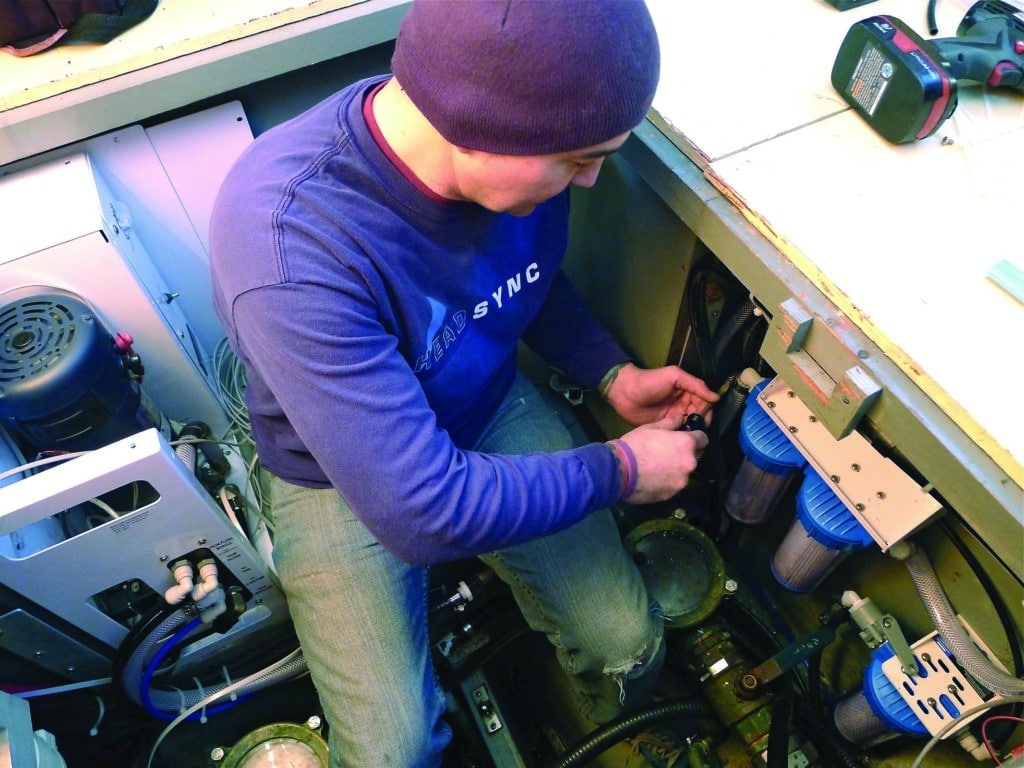
I remember, in the not too distant past, when having a watermaker aboard a cruising boat seemed to be the ultimate luxury. Plenty of sailors considered them too expensive and complicated. Fortunately times have changed. With improved technology and a range of price points on the market, now even average cruising boats of modest means carry a reverse-osmosis system. And really, is there anything that feels better after a day spent sailing and swimming than a hot shower? The freedom and security that come with full water tanks are also a nice bonus, particularly if you’re cruising in an area where fresh water is difficult to come by and pricey when you do.
Choosing a Watermaker
As with any major system, there are many factors to consider when you choose a watermaker. You’ll need to figure out your freshwater needs, the space you have available for the system and how you’re going to power it . Generally speaking, in a reverse-osmosis desalination system the raw water is run through a series of pre-filters, and then a high-pressure pump moves the water through one or more membrane housings. The wastewater, or brine, is released overboard and the product water goes into your water tanks.
Since all of the watermakers that are currently available for cruising sailboats use this process for desalination, the major differences between the systems are how you power the high-pressure pump and the user interface. Powering options include 120/220-volt AC, 12- or 24-volt DC and engine/belt driven. All have their pros and cons.
“The first question I ask a potential customer is ‘Will your boat have a ship’s generator?’” said Rich Boren of Cruise RO Water. “If they plan to have a generator, then the decision to go with a 120-volt high-output watermaker seems natural. While running the generator for battery charging and other loads two to three times per week, they can keep their water tanks full without having to make generator runs just to make water.”
A 12-volt system, such as the Spectra Catalina 300 Mk II or the Horizon Reverse Osmosis Seafari Quest, makes a lot of sense for smaller cruising boats since they don’t need a generator to run and have fairly miserly power consumption. On a breezy, sunny day, a solar panel and/or a wind generator will likely keep up with the demand. “The only difference between 12-volt DC low-output and 120-volt AC high-output watermakers is how the high-pressure pump brings seawater up to the 800 psi needed to drive fresh water through the reverse-osmosis membrane,” Boren said. “The membrane and support equipment, like pre-filtering and plumbing, are the same.”
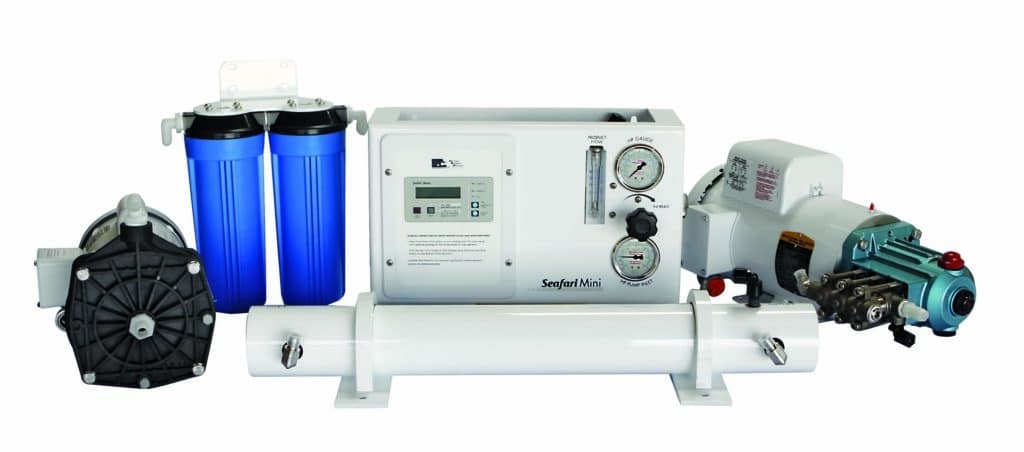
These systems typically produce anywhere from about 6 to 16 gallons per hour, and some units can do so for about a 1-amp-per-gallon power draw.
“Many smaller sailboats, under 45 feet or so, often utilize solar panels,” said Berkeley Andrews of Parker Hannifin, which produces Sea Recovery, Horizon Reverse Osmosis and Village Marine watermaker systems. “Their entire electrical backbone consists of 12-volt or 24-volt. So they must have a watermaker that can operate on low voltage. These customers have limited amp hours on their batteries, so all of their equipment must be suited to handling this.”
In choosing a watermaker, Bill Edinger, owner of Spectra Watermakers, said to be realistic about water needs. “When helping customers decide which system is right for them, first we like to determine their approximate water usage with questions like ‘How many people are aboard normally? Are you going to be living on the boat full time? Do you have a washing machine? Any children? Are you going to be cruising full time or leaving the boat for extended periods?”
A common error people make is choosing a watermaker that is too small for their needs. “The most common mistake I see cruisers making in their watermaker purchase decision is underestimating how much water it will take them to cruise comfortably,” Boren says. “I’m not talking about the minimal amount of water it takes for the crew to stay alive, because there is a big difference between staying alive and comfort. Selecting a watermaker that will only meet their minimal drinking-water needs but not keep up with the comfort needs of the crew can lead to crew tensions and feeling like camping rather than cruising.”
Remember that “watermakers are rated in gallons of production in a 24-hour period,” Edinger said. “So a 300-gallon-per-day watermaker system sounds like a lot of water. The important thing is that it produces about 12 gallons per hour. Normally a system like this will be run three to four hours per day if power is not a critical issue, in this case producing 36 to 48 gallons of water. It’s better for a system to run for a few hours every few days than an hour every day.”
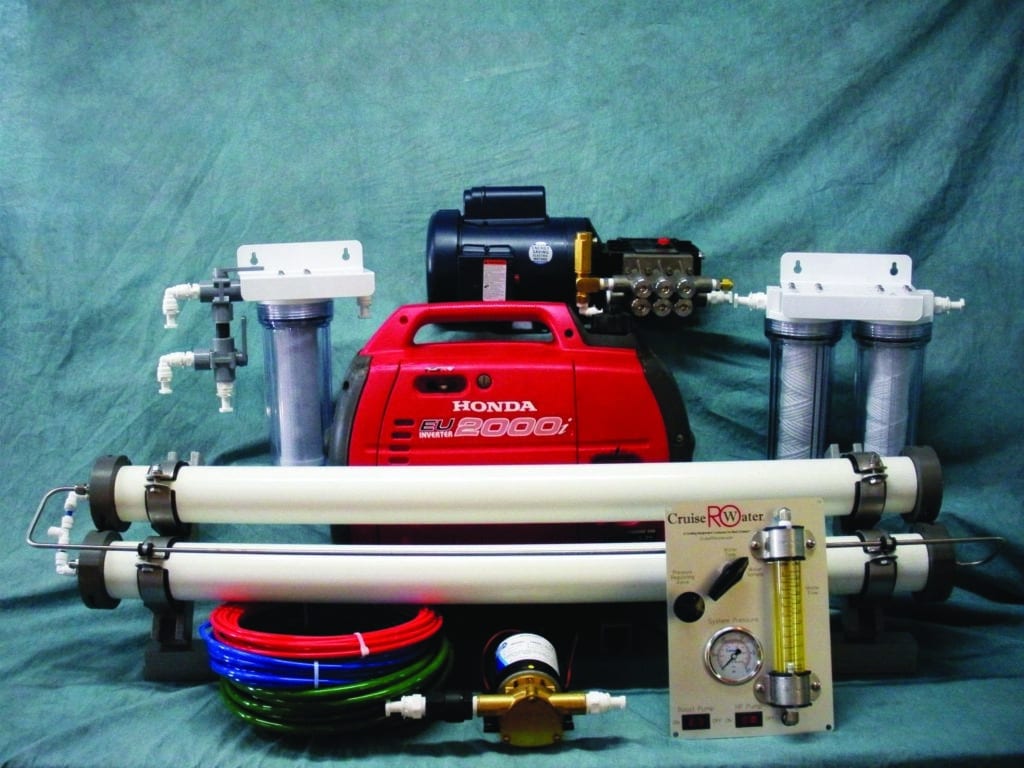
Watermakers for Small Boats
If space is at a premium, consider purchasing a modular system instead of an enclosed one. In a modular system, the components, such as the membranes and filters, can be mounted separately. Another power source for the high-pressure pump is the boat’s diesel engine. In these engine-driven setups , the pump and an additional pulley are mounted on a custom bracket next to the engine. The watermaker can then be run while motoring or using the engine to charge the batteries.
While engine-driven watermakers can produce a large amount of water, 20 or more gallons an hour on average, the downside is that the installation can be more complex than for other systems. “Unlike the 12-volt DC or 120-volt AC watermakers, where you simply bolt the high-pressure pump down and then run the wires and plumbing hoses, the hardest installation aspect of an engine-driven watermaker is finding space. Some boats simply have no room in the engine compartment to mount the 5-pound pump with a 7-inch pulley on the engine while still leaving access to other engine parts that need to remain serviceable,” Boren says.
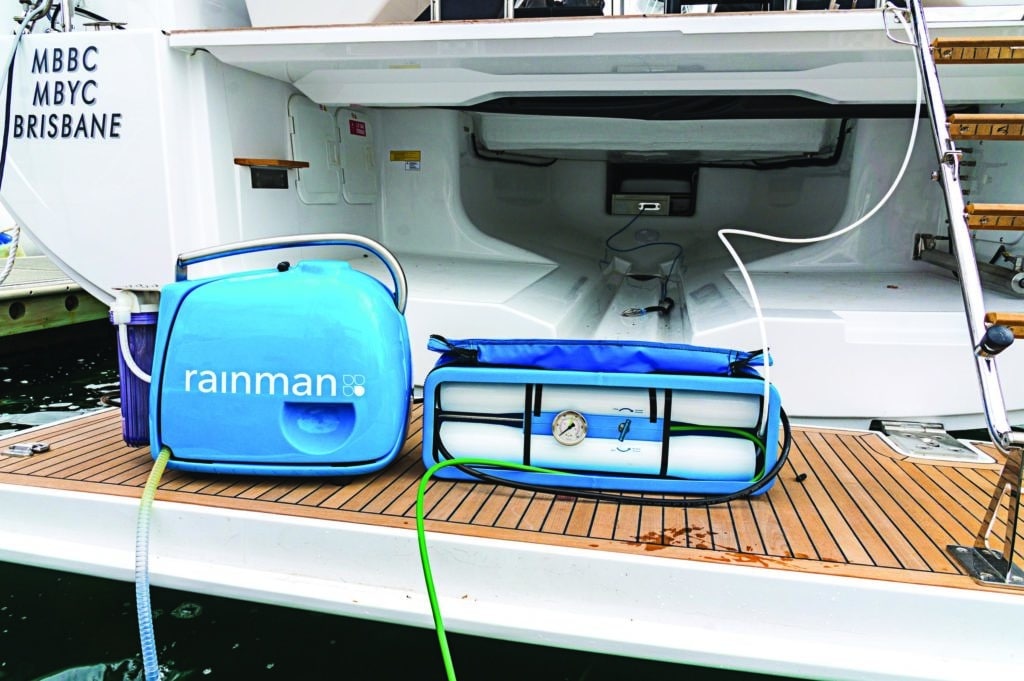
A relative newcomer to the marine market, the portable watermaker is a good solution for cruisers who want the convenience of a watermaker but don’t want to permanently install one. The Rainman is one such system that is available as a self-contained unit driven by a gasoline-powered Honda motor, or as a 115-volt AC-powered unit. “The bulk of our gasoline-powered system customers are sailing yachts between 30 and 50 feet,” said Ron Schroeder of Rainman Desalination. “Our customers seem to prefer to have a simple and somewhat manual system over one that relies on control panels, software and solenoid valves. We are also attractive to those customers who have had bad experiences with the installation process of an installed system.”
The Spectra Passport is another portable system. Edinger said it has already proved popular with offshore race crews and cruisers who need a watermaker for only a limited time.
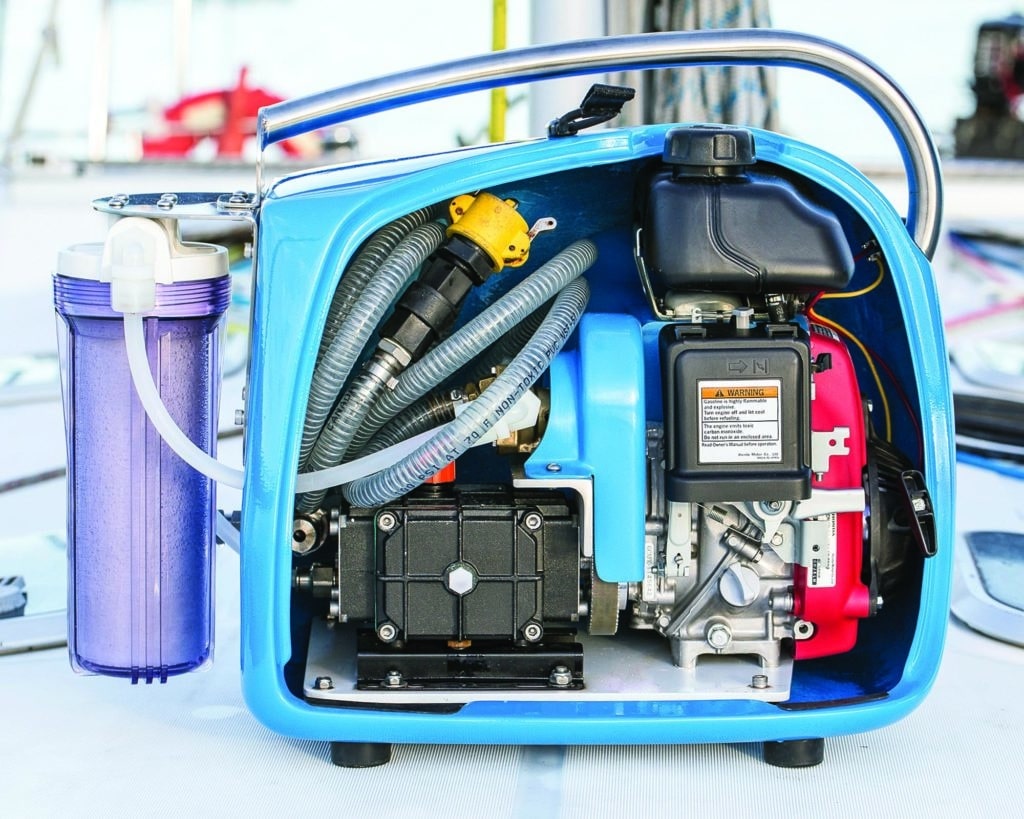
Maintenance for Watermakers
Watermakers have long had a reputation for being difficult to maintain, but the equipment has improved over the years and overall, routine maintenance isn’t more challenging than with other onboard systems. “The best rule of thumb is to operate the watermaker in water that looks good,” Andrews said. “There are a few factors in the feed-water condition that come into play. Operating a watermaker in dirty harbors will most certainly result in repeated pre-filter changes and a clogged sea strainer. If you have extra filters on board, you can get by, but it’s not recommended. The environment in the open ocean and remote anchorages is much better. Also consider how shallow the water is where you’re anchored. Sometimes there can be a lot of tidal movement, which can kick up fine particulate and sediment. This too can also contribute to more frequent filter changes and even damage other components. A nice option is an automatic freshwater flush, which will rinse the watermaker’s membrane element after use. It helps keep the membrane vessel housing free of any biological growth that could foul the membrane and reduce your ability to produce fresh water.”
Whatever system you choose, with proper use and maintenance you can expect years of service from your watermaker. And plenty of hot showers.
Jen Brett is a CW associate editor. This article first appeared in the February 2015 issue of Cruising World.
Aqua Marine: www.aquamarineinc.net
Blue Water Desalination: www.bluewaterdesalination.com
Cruise RO: www.cruiserowaterandpower.com
Dometic Marine Sea Xchange: www.dometic.com
ECHOTec: www.echotecwatermakers.com
FCI Watermakers: www.filtrationconcepts.com
Horizon Reverse Osmosis (HRO): www.hrosystems.com
Katadyn: www.katadyn.com
Rainman: www.rainmandesal.com
Sea Recovery: www.searecovery.com
Schenker Watermakers: www.schenkerwatermakers.com
SK Watermakers: www.skwatermakers.net
Spectra Watermakers: www.spectrawatermakers.com
Village Marine Tec: www.villagemarine.com
Watermakers Inc.: www.watermakers.com
- More: DIY Sailboat Projects , How To , systems
- More How To

Grease the Wheels of Your Boat: A Guide to Proper Lubrication

A Bowsprit Reborn: A DIY Renovation Story

Rigging Redo: Our Switch to Synthetic

Top Tools for Sailboat Cruising: Must-Have Gear for 2024

Galápagos: A Paradise Worth the Paperwork

Around Alone

- Digital Edition
- Customer Service
- Privacy Policy
- Terms of Use
- Email Newsletters
- Cruising World
- Sailing World
- Salt Water Sportsman
- Sport Fishing
- Wakeboarding

7 Best Sailboat Watermakers For Liveaboards 2024
If you’re a liveaboard sailor looking for the best sailboat watermaker then you’ve come to the right place. In this blog post, we’ll take a look at some of the best watermakers on the market and show you how they can help make your sailing experience more enjoyable.
There’s nothing quite like the freedom of sailing on the open water. If you’re a liveaboard sailor, though, you know that keeping your boat stocked with fresh water can be a challenge. That’s where sailboat watermakers come in handy.

Not only do they produce fresh water for drinking and cooking, but they also help keep your boat clean by providing water for showers and dishes.
In this blog post, we’ll take a look at the best sailboat watermakers available on the market today. We’ll discuss the pros and cons of each model so that you can make an informed decision before purchasing one for your boat.
So, whether you’re looking for a compact unit that is easy to install or a high-performance model that can handle large volumes of water, we have something for you. Keep reading to learn more.
How do marine watermakers work?
What are the benefits of having a watermaker on your sailboat.
- How do I choose a sailboat watermaker?
How big a water maker do I need?
How much does a sailboat watermaker cost, how much power does a watermaker use, how much space does a marine watermaker take up, maintaining your sailboat watermaker, the best sailboat watermakers for liveaboards.
As an Amazon Associate, we earn from qualifying purchases. We also earn from other affiliate programs. This means we may receive a small commission on products purchased through our links at no extra cost to you.

Marine watermakers are devices that convert salt water into fresh water, making them an essential tool for sailors and boaters. But how do they work?
At the heart of every marine watermaker is a reverse osmosis membrane. This is a thin, semi-permeable film that allows water molecules to pass through, but blocks out larger molecules like salt.
To create freshwater, salt water is forced through the membrane under high pressure. This process is known as reverse osmosis, and it leaves the salt behind in the brine stream. The freshwater that comes out of the other side is then collected and stored in tanks.
Marine watermakers are powered by either electricity or a diesel engine, depending on the size of the unit. Some small portable units can even be powered by a car battery.
You will probably want a pretty decent battery bank and solar or wind setup to power your watermaker. By far the easiest solution is to get a reliable, drop in battery. We highly recommend BattleBorn’s lithium batteries which is what we use to power our watermaker.
⚡ Check out BattleBorn batteries here

If you’re thinking of outfitting your sailboat with a watermaker, you’re in for a treat. Adam and I put off buying one for two years, as we weren’t sure it would be worth the big investment. But after a year in the Cyclades where finding free town quays with water was near impossible, we decided to bite the bullet and commit.
It’s the one thing we wish we’d done sooner. A sailboat watermaker has literally changed our lives at sea and we couldn’t be without one now.
Not only will you have a reliable source of fresh water, but you’ll also be able to enjoy extended stays at sea. Here are just a few of the benefits we’ve found of having a watermaker on your sailboat:
Perhaps the most obvious benefit of having a marine watermaker is that you’ll never have to worry about running out of fresh water. Whether you’re sailing around the world or just spending a few weeks cruising the coast, a watermaker will give you the peace of mind that comes with knowing you have an unlimited supply of fresh water.
Obviously, fresh drinking water from the watermaker is great, but it also means we don’t worry about taking a shower or the huge amounts of washing up caused by certain meals or having people over for dinner!

In addition to providing an endless supply of fresh water, a watermaker can also help extend your cruising range. By making your own water, you won’t have to make as many stops to restock your tanks. This means you can stay out on the open water for longer periods of time and explore more distant ports. It also saves a lot of money on marinas and a lot of trips to beach showers!
Finally, having a watermaker onboard can be a real lifesaver in an emergency. If your boat is disabled and you’re stuck at sea, having a way to make fresh water can mean the difference between life and death.
How do I choose the best sailboat watermaker?

There are a few things to keep in mind when choosing a watermaker for your sailboat. There is no one size fits all when it comes to choosing the perfect watermaker for you, so take some time to read the pros and cons of each model before you commit!

If you’re just cruising around the local waterways, you can get away with a smaller unit and top up your tanks with water from the dockside. But if you’re planning on venturing out into the open ocean, you’ll need a larger unit that can produce more water.
You’ll want to take into consideration the amount of people you’re likely to have onboard. Adam and I find out Rainman naked 12V system keeps up with our needs just fine, but after taking on two more members of crew we quickly ran out of water and struggled to keep up with the new demand.
You should also track your water usage habits for a bit to see how much water you use on a daily basis. If you can’t live without daily long showers, or you need fresh water to wash down the boat regularly, or you have fresh water flushing toilets then you’ll obviously be using a lot more water than others.
The amount of water you use when you have a watermaker is likely to increase a little from your needs now, as you’ll be a little less careful with it. Factor this into your decision!

Like everything in sailing, you can spend as much or as little as you want on a watermaker. There are even some people who have successfully made their own watermaker and only spent money on the parts (some of which you can source second-hand).
If you aren’t a wizard with things like that though, you’re going to be looking at spending a decent amount of money on a sailboat watermaker. On average, they cost around £3000-£5000 for a watermaker for a cruising sailboat (around 40ft).
You can spend more like £10,000 on a watermaker for a larger boat, and you can spend less on a second-hand marine watermaker or a DIY one.
We’ve put together a guide to help you work out your needs based on what you use aboard.
Different brands of watermakers are more efficient than others, but from our own experience and that of others we’ve talked to, it takes around 10 Watt-hours to make a litre of water – i.e. about 0.8 Amp-hours from a 12-volt battery.
Things like the chemistry of your battery bank, the length of your cable runs, and even the temperature of the sea, can all make a difference to the amount of power you’ll need to make a certain amount of water, but this is a rough average.
We’ve got a guide on working out how much power you’ll need.

A marine watermaker is a very useful tool, but it’s not exactly small. In fact, depending on the model, a watermaker can take up quite a bit of space.
The average unit is about the size of a small freezer, and some models are even larger. Given that most boats are fairly limited in terms of space, this can be a bit of a problem.
The good news is that there are now several manufacturers who offer compact watermakers that are designed to take up less space. These units are often smaller than a standard coffee maker, making them much easier to find a spot for on your boat.
We’ve included some great options for smaller boats below.

Like any piece of equipment, a watermaker requires regular maintenance. Fortunately, there are some simple steps that you can take to keep your watermaker in good working condition.
First, be sure to check the filters on a regular basis. Not only will this help to ensure that your water is clean, but it will also help to prolong the life of your watermaker.
Second, be sure to check the seals and o-rings for leaks. These are essential for keeping your watermaker operating efficiently, and any leaks can lead to costly repairs.
Finally, be sure to perform a yearly “spring cleaning” by flushing the system with fresh water.
By following these simple tips, you can keep your watermaker in good working order for years to come.
You should also account for the fact that parts are bound to break and need fixing or replacing. Most watermakers come with proprietary parts which make them a pain to fix in remote places, but there are a few that take non-proprietary parts. We would recommend these to anyone planning a larger cruising ground.
#1 Rainman naked 12V Marine Watermaker

The Rainman naked 12V watermaker is a great option for anyone looking for a compact, efficient way to produce fresh water.
The unit is simple to set up and use, and it produces up to 30 litres of fresh water per hour for a smaller unit, or up to 140 litres per hour for a larger one.
One of the main reasons we were drawn to Rainman watermakers is that they use all off-the-shelf, standardised parts. If your Rainman breaks down, it almost doesn’t matter where in the world you are – you’ll likely be able to get standardised spares in the nearest major city. For any liveaboards hoping to circumnavigate this should be an important consideration.
Installation was really very straightforward. End-to-end it took two days to install and test the unit, plus an extra day to get the autoflush set up.
We were pleasantly surprised to find that the unit came with almost everything we needed to install it. We were expecting to supply our own hoses, sundries, etc. but Rainman supplies everything you need.
Whether you’re sailing around the world or just weekends on the lake, the Rainman naked 12V watermaker is a great way to ensure you have access to fresh, clean water.
Check out our full Rainman watermaker review for everything you need to know.
#2 Spectra Newport 400c Watermakers for Sailboats
Spectra watermakers have an excellent reputation among the sailing community and you can’t go wrong with one of their marine watermakers for your sailboat.
They make a range of different sailboat watermakers to suit different needs and sizes of boat, from hand-operated desalinators that can make 6 gallons a day to their largest system that produces 20,000 gallons of fresh drinking water per day.
The Newport 400c model operates on as little as 4 watts per liter, so you can run it on a small generator, solar, wind, or even just straight off the batteries. It’s a great option
The Spectra Connect system means you can operate and monitor your watermaker from a remote device, and it has lots of other clever features including a fill tank mode and suggested maintenance intervals.
You can choose the speed operation on this sailboat watermaker for maximum flow or maximum efficiency depending on your power management onboard. This is a great ‘all bells and whistles’ watermaker that takes the guesswork out.
#3 Spectra watermaker Ventura Series
As with the Newport 400c, Spectra ensure these watermakers are built to last and they have a really great reputation.
The Spectra watermaker Ventura series is designed to be energy-efficient and lightweight and is the perfect watermaker for smaller spaces.
It produces 24 litres an hour, which is less than the Rainman model but still enough for a couple living aboard a small sailboat if you’re conservative with water usage.
You can also opt for a warm water model that will produce slightly more water per hour and is the same size (but you’ll need to be sure your cruising area is only warm water!)
#4 The Ultra Whisper
The Ultra Whisper by Sea Recovery is one of the best watermakers out there for smaller boats, or boats not set up with adequate power to run one of the larger units.
It can run on either AC or DC and claims a 75% reduction in power consumption compared to the other products listed here. It’s also super quiet, which if you’ve run a watermaker before, is actually a huge bonus!
This is a small but perfectly formed piece of equipment that will enable you to make water with the smallest power setup, but obviously, on the downside, you won’t produce as much water so you’ll need to be careful with your consumption onboard.
Sea Recovery has more watermaker models on offer in a wide variety of size and capacity options. There’s even a really tiny version that measures only 2-3 cubic feet for sailboats that can’t compromise on space.
#5 Village Marine – Little Wonder series
Village Marine is another of the most popular marine watermaker brands and has a reputation for making reliable and efficient sailboat watermakers in a range of different models to suit different needs.
The Little Wonder series is one of the smallest (the reason for the name) and weighs only 69 pounds with the ability to produce 180 gallons of freshwater per day.
It has a low RPM high-pressure pump in a modular design, which means you can install it in different parts of the boat to maximise your space. This is really handy for smaller sailboats.
Installation is quick and easy, and a competent DIYer can do it. It is anti-corrosive and as a bonus, is also quiet to run!
This is one of the best watermakers on the market for smaller sailboats, and should last a long, long time.
#6 Village Marine – LW Watermaker Series for bigger boats
For anyone out there looking for a serious sailboat watermaker for a bigger boat, Village Marine has something suitable. The LW watermaker series caters to boats up to 100 feet in length.
This watermaker can produce up to 1800 gallons of freshwater a day, which is a crazy amount and will give you complete water independence on board.
It’s a much larger unit, obviously, so you’ll need to make sure you have space on board. It’s also a lot more expensive so it really is only suitable for larger boats and commercial vessels.
#7 Rainman Portable Sailboat Watermaker

Rainman make a portable watermaker that has many benefits over an installed version. it won’t suit all sailboats but it’s a great option to have for the following reasons.
- You don’t need to install the system. You can cut out a lot of the faff and make fresh drinking water within minutes of receiving the product.
- You don’t need any extra holes in your hull to use the watermaker.
- If you race your sailboat you can store the watermaker ashore to save on weight.
- It’s a great option for smaller sailboats as it can be moved to accommodate for extra guests.
- You can take it with you from boat to boat.
- You can share the watermaker and potentially the cost!
- You can use it for all your trips away from water supplies. Take it on road trips, fishing trips etc.

A portable sailboat watermaker might make a lot more sense for your needs, and it’s great to have the option to choose between the two. This watermaker comes with all the benefits of the Rainman installed version, so you can check out our Rainman review to help with your decision.
Conclusion for the best sailboat watermakers

If you’re in the market for a watermaker, we hope our review has helped you narrow down your choices. We believe that the best sailboat watermakers are those that are reliable, powerful enough for your needs, and easy to maintain. So if you’re looking for an efficient and durable watermaker, be sure to check out the options on this list.
If you’re looking for more liveaboard tips or want help with planning your move onto a boat then check out our ‘ How to run away to sea ‘ guidebook for everything you could possibly need to know about living on the ocean.
Similar Posts

101 Quotes About The Ocean: Capturing The Essence Of The Sea

7 Large Cockpit Sailboats: When Size Matters

Sailing Close To The Wind: How And Why You Should

Sailing Your Sailboat In A Storm: The Ultimate Guide

How Much Do Sailboats Cost 2024? The Average Prices

Sailboat Keel Types: Pros And Cons 2024

Best Water Filter for Sailboats: Marine Systems

Modern developments have made marine water filters cheaper and more efficient than ever.
In this article, we'll cover five of the best water filtration systems for boats. We'll also explain the difference between the most common types of marine water filters and analyze the pros and cons of each to help you make the right choice.
The best reverse osmosis water filter systems for saltwater are the Seawater Pro Watermaker, the SeaXchange filter system, and the Pelikan 2-Stage RO water purification system. The best freshwater filters are the Aquasana 3-Stage Filter, the West Marine HighFlo filter, and the AquaBrick system for small boats.
Information in this article comes from marine filtration system manufacturers, owners of these filters, and the advice of marine filtration system installers.
Table of contents
Saltwater vs. Freshwater Filtration Systems
The type of filter you need depends a lot on the type of water you need to filter. For freshwater filtering (such as from a lake or onboard freshwater tank), a standalone inline filter will suffice. Special filters should be used if you intend to drink lake water, and some people recommend reverse osmosis for all water sources.
Reverse osmosis filter systems are required for filtering salt water into drinkable water. The process itself is called desalination, and reverse osmosis systems can do it effectively. Another way to convert saltwater into drinkable freshwater is through distillation, but this process only works efficiently at scale, and it's impractical for personal sailboats.
What is Reverse Osmosis?
Reverse osmosis is the most effective small marine water filtration system available today. Reverse osmosis (RO) systems are compact and energy-efficient, and they have become quite affordable.
Reverse osmosis is essentially a pressurized filtration system with an extremely fine filter. The process forces dirty water to pass through a membrane which traps all particles (including salt) that aren't pure water. These systems are just as effective with saltwater as they are with fresh water, though they'll need to be cleaned more often when used in the ocean.
Should I Buy a Reverse Osmosis Filter for my Freshwater Boat?
You don't need a reverse osmosis system to make freshwater drinkable. Charcoal filters will usually do the trick, and many people are satisfied with them. Freshwater filters don't always require electricity, whereas reverse osmosis systems always require some source of power to produce the necessary pressure.
That said, reverse osmosis systems can produce large volumes of highly purified water, and they do a better job when combined with charcoal filters than charcoal systems alone. Additionally, reverse osmosis filters are the only kind of marine filters that can desalinate water on a small scale.
Best Reverse Osmosis Boat Water Filters
Reverse osmosis filters are the best water purifiers available for boats. These systems purify freshwater and desalinate saltwater, making them ideal for all environments. Here are three of the highest-rated RO filter systems on the market.
1. Seawater Pro Reverse Osmosis Desalinator and Watermaker
The best modular water filtration unit available for boats is the Seawater Pro three-membrane system . This all-in-one marine water purification machine is designed for medium-sized sailboats and powerboats.
This Seawater Pro system is a professional-level filtration plant that produces up to 50 gallons of clean drinkable water per hour directly from the ocean. It's designed to be installed in-line with existing plumbing, and it requires electricity to run.
Seawater Pro watermaker and desalination systems are available in 110v AC or 12v DC configurations, which means any boat with sufficient power can utilize one of these systems. Seawater Pro systems come in different sizes and configurations, and many can run off a standard 1600-watt electric generator.
If you're looking for a long-term watermarking solution for your boat, you can't go wrong with Seawater Pro. The system is compact and reliable, and owners are highly satisfied with the quality of water they're getting.
Key Features
- 50 gallons per hour
- 80 gallon-per-hour systems available
- 110v AC or 12v DC models available
- Stainless steel pressure regulators
- Food-grade pressure vessel
- Many parts are Made in the USA with a lifetime warranty
2. SeaXchange Watermaker XTC Series
SeaXchange produces one of the best self-contained marine water filtration systems on the market today. The SeaXchange III XTC series is their flagship watermaker and filter for boats, and it's available in multiple sizes.
For smaller boats, the SeaXchange XTC600 is ideal. It has a single membrane that can purify up to 25 gallons of water per hour. Larger boats can utilize the XTC200, which has an hourly purification capacity of 92 gallons.
The SeaXchange XTC is a reverse osmosis watermaker that functions much like the Seawater Pro unit. This system purifies water and desalinates saltwater using pressure and an ultrafine membrane.
The SeaXchange XTC series is modular, which means it includes all of the specialized components you need to convert seawater into drinkable fresh water; though professional installation is recommended, the modular design of this unit means you can get it up and running quickly without ordering any additional proprietary parts.
- Units available that produce between 25 and 92 gallons of fresh water per hour
- It's the only marine reverse osmosis system with mechanical redundancy
- 70 electronic control display
- Smartphone-compatible controls
- One-touch operation and automated controls
3. Pentair Pelican Six-Stage Filtration System
The Pentair Pelican is the most compact reverse-osmosis water filtration system on our list. And while it might not be the best option for desalination, it can easily purify freshwater from your tanks for drinking.
The Pelican six-stage water filter system is designed for as-needed water consumption, and it hooks up directly to a faucet. This unit uses a six-stage process to remove dissolved substances, sediment, foul tastes, and toxic chemicals. It also removes harmful contaminants such as parasites.
The process starts with reverse osmosis, which does the majority of the actual purifying. Next, water passes through a pre-filter, then to the specialized filter itself. After, water makes its way through an additional membrane to remove any remaining contaminants. The final steps in the process are polishing and mineral re-introduction for improved taste and health benefits.
The unit itself is designed for home use, but it can work just as well in the galley of a sailboat provided the pressure and power requirements are met. The Pelican Six-Stage reverse osmosis system is the most affordable of its kind on our list.
- 17.9 Gallons per day
- 40 to 80 PSI operating pressure
- Designed for use with a single faucet
- Reverse osmosis and filter combination
- Made in the USA
- 6 to 18-month filter life
Best Standard Filtration Systems for Boats
Now, let's move on to standard filtration systems. Standard filters don't desalinate, but they're much simpler and more affordable than reverse-osmosis systems.
Most marine water filters utilize activated charcoal as the primary purification medium. Activated charcoal removes chemical contaminants, foul smells, bad tastes, and most pathogens. This method of filtration is usually backed up by additional filters which remove larger particles such as tank sediment, plant matter, and dirt.
Many of these marine filtration systems are passive and use existing water pressure to operate. That means that they don't require any additional power, assuming the water is either pre-pressurized or drawn up from the tank with a hand-pumped spigot.
1. Aquasana Three-Stage Water Filter
The Aquasana Three-Stage water filtration system purifies freshwater using a unique combination of large particle and charcoal filters. The company claims that this compact filter system "reduces 15X more contaminants than the leading pitcher filter..." Also, the Aquasana system is passive and requires no additional power.
Aquasana's three-stage Claryum system relies on three separate inline filter canisters, which are easy to replace. Simply twist off the canisters, remove the cylindrical filters, and replace them. The filters have a combined service life of 600 gallons, though the company recommends replacing them every six months.
The first stage in the process is a large particle pre-filter. This filter removes dirt, rust, and other sediments that would cause your water to look murky. The second and third filters contain various kinds of charcoal, which are responsible for most of the true purification. A combination of activated charcoal, catalytic carbon, and ion-exchange material remove 99% of lead, 96% of PFOS/PFOA, pathogens, and 75 more harmful substances.
This filter has a relatively low 5 gallon per minute flow rate, though it's sufficient for most galley faucets. The kit comes complete with a faucet as well, which is available in three colors.
- Passive three-stage freshwater filter
- Meets NSF/ANSI standards 42, 53, and 401
- Six-month/600-gallon filter life
- 40-80 PSI operating range
2. West Marine HighFlo KDF Water Filter
West Marine offers an excellent water filter that's designed specifically for boats. The West Marine HighFlo filtration system is a compact single-canister freshwater filter designed to be an inline addition to your existing plumbing.
Over time, freshwater tanks on boats accumulate grime and sediment. Worse yet, boat tanks can harbor pathogens and leach toxic chemicals into your drinking water. Not to mention the fact that, more often than not, marina water isn't the cleanest or best-tasting either.
The West Marine HighFlo KDF filter mitigates these issues without any additional electricity. This-filter has a capacity of five gallons 5 gallons per minute, which is about twice the flow rate of many similar products. The filter contains activated charcoal, which traps bacteria, dirt, and toxins such as lead and chromium.
The filter itself is easy to install and maintain, as filter replacements should only occur seasonally. The filter itself also removes chlorine, which could be leftover from tank cleaning. This filter is highly affordable, and replacement filters are readily available through West Marine,
- 2.5 to 5 GPM flow rate
- The charcoal filter removes particles 5 microns and larger
- One-season filter lifespan
- Non-electric
- Inline installation
3. Aquabrick Portable Water Filtration System
The Aquabrick water filtration system is an excellent option for small boats based on freshwater. This system is designed for survival use, but it can also serve as a water storage and purification system for your boat. It’s compact and pressurized, allowing you to enjoy strong water flow. With a bit of engineering, you can connect it directly to a faucet in your boat.
The Aquabrick consists of a tank, a hand pump, a filter, and a spigot attached to a line. By pressurizing the tank with the hand pump, you force water through the DuraFlow filter and into the spigot on the end of the line. The tank itself stores three gallons of water, and the filter is good for up to 700 gallons overall.
According to the manufacturer, the Aquabrick DuraFlow filter “removes 99.99999% of all bacteria…” along with 99.99% of viruses. Additionally, the filter removes chemicals such as chlorine and heavy metals such as lead and chromium. That means that virtually any lake or river water will be safe to drink and cook with after passing through the filter.
- Portable charcoal filter system
- 3 gallon tank
- Hand-pressurized
- 700-gallon filter life
- Purifies any freshwater source of chemicals and pathogens
Related Articles
Daniel Wade
I've personally had thousands of questions about sailing and sailboats over the years. As I learn and experience sailing, and the community, I share the answers that work and make sense to me, here on Life of Sailing.
by this author
Sailboat Parts
Sailboat Upgrades
Most Recent

What Does "Sailing By The Lee" Mean?
October 3, 2023

The Best Sailing Schools And Programs: Reviews & Ratings
September 26, 2023
Important Legal Info
Lifeofsailing.com is a participant in the Amazon Services LLC Associates Program, an affiliate advertising program designed to provide a means for sites to earn advertising fees by advertising and linking to Amazon. This site also participates in other affiliate programs and is compensated for referring traffic and business to these companies.
Similar Posts

How To Choose The Right Sailing Instructor
August 16, 2023

Cost To Sail Around The World
May 16, 2023

Small Sailboat Sizes: A Complete Guide
October 30, 2022
Popular Posts

Best Liveaboard Catamaran Sailboats
December 28, 2023

Can a Novice Sail Around the World?
Elizabeth O'Malley
June 15, 2022

4 Best Electric Outboard Motors

How Long Did It Take The Vikings To Sail To England?

10 Best Sailboat Brands (And Why)
December 20, 2023

7 Best Places To Liveaboard A Sailboat
Get the best sailing content.
Top Rated Posts
© 2024 Life of Sailing Email: [email protected] Address: 11816 Inwood Rd #3024 Dallas, TX 75244 Disclaimer Privacy Policy
- New Sailboats
- Sailboats 21-30ft
- Sailboats 31-35ft
- Sailboats 36-40ft
- Sailboats Over 40ft
- Sailboats Under 21feet
- used_sailboats
- Apps and Computer Programs
- Communications
- Fishfinders
- Handheld Electronics
- Plotters MFDS Rradar
- Wind, Speed & Depth Instruments
- Anchoring Mooring
- Running Rigging
- Sails Canvas
- Standing Rigging
- Diesel Engines
- Off Grid Energy
- Cleaning Waxing
- DIY Projects
- Repair, Tools & Materials
- Spare Parts
- Tools & Gadgets
- Cabin Comfort
- Ventilation
- Footwear Apparel
- Foul Weather Gear
- Mailport & PS Advisor
- Inside Practical Sailor Blog
- Activate My Web Access
- Reset Password
- Customer Service

- Free Newsletter

Catalina 270 vs. The Beneteau First 265 Used Boat Match-Up

Ericson 41 Used Boat Review

Mason 33 Used Boat Review

Beneteau 311, Catalina 310 and Hunter 326 Used Boat Comparison

Tips From A First “Sail” on the ICW

Tillerpilot Tips and Safety Cautions

Best Crimpers and Strippers for Fixing Marine Electrical Connectors

Thinking Through a Solar Power Installation

Polyester vs. Nylon Rode

Getting the Most Out of Older Sails

How (Not) to Tie Your Boat to a Dock

Stopping Mainsheet Twist

Fuel Lift Pump: Easy DIY Diesel Fuel System Diagnostic and Repair

Ensuring Safe Shorepower

Sinking? Check Your Stuffing Box

The Rain Catcher’s Guide

What Do You Do With Old Fiberglass Boats?

Boat Repairs for the Technically Illiterate

Boat Maintenance for the Technically Illiterate: Part 1

Whats the Best Way to Restore Clear Plastic Windows?

Giving Bugs the Big Goodbye

Galley Gadgets for the Cruising Sailor

Those Extras you Don’t Need But Love to Have

What’s the Best Sunscreen?

UV Clothing: Is It Worth the Hype?

Preparing Yourself for Solo Sailing


How to Select Crew for a Passage or Delivery

R. Tucker Thompson Tall Ship Youth Voyage

On Watch: This 60-Year-Old Hinckley Pilot 35 is Also a Working…

On Watch: America’s Cup

On Watch: All Eyes on Europe Sail Racing

Dear Readers
- Belowdecks & Amenities
- Marine Electronics
- Systems & Propulsion
Test of Six 12-volt Watermakers
While at first blush all appear about the same size, we find important differences in output and current consumption. the spectra 180 is amazingly efficient but expensive. of the six, village marine tec's little wonder seems the most tried and true..
Last month we took an overview of the pros and cons of 12-volt watermakers. This month, we look at high-output machines from five manufacturers, ranging from systems from industry giants such as Village Marine to small shops such as SK Engineering. All of the watermakers we looked at were production models, although the Spectra 180 we tested had been re-configured to serve as a demonstration model.
As we began our market survey and field testing, we discovered that a number of other manufacturers are jumping into the fray, realizing that 12-volt watermakers constitute a small but growing segment of the market. Most notable among these new players is HRO-another industry giant-which has been promising a state-of-the-art, computer-controlled, self-contained 12-volt watermaker for more than a year. We saw the literature a year ago at the Miami Boat Show. We saw a non-operational mockup last fall at the Southampton, England boat show. We have yet to see a functional machine in the flesh.
With the assistance of Andy Cortvriend of Ocean Link, a knowledgable Portsmouth, Rhode Island, marine servicing company, we tested product output, water quality, and electrical consumption of all the watermakers. Electrical consumption was measured with a Cruising Equipment amp-hour meter, using gel cell batteries maintained at full capacity by a Heart inverter/charger between tests.
Saltwater was pulled from lower Narragansett Bay into a large storage tank maintained at a constant temperature during the tests. The waters at our Little Harbor test facility are not as clean as open ocean waters, but are closer to the reality of the watermaking most cruisers will experience. This was not a pure laboratory test with manufactured sea water of exactly the right total dissolved solids (TDS).
We then examined each machine carefully on the bench, looking for weak points, strong points, potential installation or maintenance hang-ups, and general quality of construction.
The quality of output water was tested with a TDS meter and all machines easily met standards for potability.
The real test of any watermaker is how it performs over time-not just months, but years. Because maintenance is a key factor in longevity and trouble-free operation, the owner/operator will bear a large portion of the responsibility for the long-term success of any watermaker installation.
Here are our findings.
Village Marine Little Wonder When Village Marine Tecs Little Wonder was introduced almost a decade ago, it was the first 12-volt watermaker that actually had the capacity to supply the water needs of a medium-sized cruising sailboat without almost continual running. More than 1,500 of these compact, well-made machines have been produced, and there have been virtually no changes to the design or components over the entire production run.
Both 12-volt and 24-volt models are available, with the higher voltage model producing slightly more product flow.
The standard model is totally self-contained in a well-designed package, with all components bolted to a heavy aluminum chassis, topped off with a removable aluminum cover. Mounting requires drilling through the chassis for suitable through-bolts.
The three plumbing connections-feed water, product water, and brine discharge-are pre-plumbed through one end of the case. The wiring junction box also contains connections for an optional feed water boost pump, and an internal 25-amp breaker to protect the electrics.
Although the package is tightly plumbed, there is reasonable space between components for service.
Power for the high-pressure pump is provided by a continuous-duty 1/4-hp. Pacific Scientific motor, rated at 21.5 amps at full power. The motor is connected to the high-pressure pump by a lightweight cogged belt.
The heart of the Little Wonder is its proprietary high-pressure pump, specially made by Village Marine for this machine. It features a titanium pump head with ceramic plunger-a combination which should be corrosion-proof for the life of the watermaker. All wetted parts in the pump are titanium, type 316 stainless steel, or ceramic. High-pressure plumbing and connectors are type 316 stainless.
Monitoring includes a high-pressure gauge and product flow gauge. System pressure can be adjusted if necessary using an open-end wrench, although the factory pre-set pressure of 800 psi should be correct for most watermaking situations. The pressure regulator is a high-quality regulator, rather than the more commonly seen needle-valve adjuster.
The fiberglass pressure vessel and the standard-sized 2521 membrane are both manufactured by Village Marine, although they are industry-standard in size.
In our tests, the Little Wonder produced a product flow of 5.8 gph at 13 volts, drawing 16.7 amps-about 37.4 watts per gallon. This does not include the 1-amp current draw of the small optional booster pump, which is required for above-the-waterline installations, long feed water runs, or installations containing multiple pre-filters.
The water produced by the machine we tested was very high quality. The noise level of 79 dB, with the cover removed, was louder than the two quietest machines tested, but was not loud enough to be objectionable.
The self-contained unit is 25.5″ long, 11″ wide, and 9.25″ high, and requires a slightly larger mounting space to accommodate plumbing connections and allow access for removal of fastenings holding the cover. For tight installations, a modular version is available, which does away with the mounting chassis and uses flexible high-pressure hoses rather than rigid stainless steel tubing. Obviously, installation of the modular unit requires slightly more time, but offers a lot of flexibility-very desirable in field installations aboard the typical cruising sailboat, in which locker or shelf space is at a premium.
Documentation is excellent, with a 35-page manual covering installation, operation and maintenance.
The warranty is somewhat complex. The membrane has a three year warranty, the pressure vessel a lifetime warranty, the high pressure pump a one-year warranty-although some of its internal components have only a 90-day warranty-and the electric motor 12 months. You need a flow chart to keep it straight.
The Little Wonder comes with pre-filter, three-way cleaning valve, basic plumbing connectors, and a membrane cleaning kit. You supply PVC hose, hose clamps, and the wiring connection. Options include the boost pump (standard with the modular version, $144 for the self-contained version), a three-way sampling valve ($38), a pre-plumbed fresh water flushing system ($150), hand-held salinity meter ($49), and spares kit for extended cruising ($199). For long-range cruising, all of these options are nearly essential for any properly installed watermaker.
List price of either the self-contained or modular 12-volt Little Wonder is $3,195. It is available at slight discounts through some mail-order catalogs, and there are periodic promotions at boat shows featuring special prices and thrown-in options.
Weight of the self-contained system is 63 lb. (The modular system weighs 48 lb.)
Village Marine will soon introduce a higher-output version of the Little Wonder, a 1/3-hp. watermaker in almost the same package size. Current draw, however, will be about 26 amps, requiring heavier wiring and perhaps a look at your battery capacity and charging capabilities.
Bottom Line: There are quieter 12-volt machines, more efficient ones, cheaper ones, and others that put out more water. The Little Wonder, however, has a combination of features-ease of installation, relatively low current draw, high quality components, and a 10-year track record-that is hard to beat. You can’t go wrong with this watermaker.
SK Engineering DC 150 SK Engineering is a small watermaker manufacturer based in Ft. Pierce, Florida. They do virtually no advertising, go to few boat shows, and have a very low-overhead operation geared to the Florida market. While most of their units are AC-powered, their DC 150 is a 12-volt model with a nominal output of 6 gallons per hour.
The DC 150 is powered by a 1/3-hp. continuous-duty Pacific Scientific motor rated at 26 amps. This is a larger version of the motor that powers the Village Marine Little Wonder.
The membrane is a standard 2521, and the pressure vessel appears identical to that used by Village Marine. All high-pressure fittings are type 316 stainless, as is the rigid high-pressure plumbing.
A Giant high-pressure pump provides pressure for the system. This is a standard industrial pump with a stainless steel pump head. A complete servicing manual for the pump is provided.
This is an open-frame system, with the components mounted on a heavy aluminum chassis. The footprint is 18.5″ x 12.5″, with a height of 8.5″. The pressure vessel is mounted on the outside of the chassis, increasing overall dimensions to about 25″ long outside the footprint of the mounting frame. Rubber vibration mounts are provided to isolate the chassis, reducing noise and vibration.
System pressure is user controllable via a knob-operated valve on the panel. Monitoring capabilities include system pressure and product water flow.
In operation, the DC 150 was one of the quietest machines tested, producing a maximum of 72 dB of noise. Product flow of the test machine was 6.5 gallons at 800 psi, with the motor drawing 21.3 amps at 13 volts. This translates into electrical consumption of 42.6 watts per gallon of water produced. As with other systems, adding a booster pump for above-waterline installations would add to total current draw. SK states that the system will operate without a booster pump in installations up to 2′ above the waterline.
One of the nicer features of this machine is the availability of a remote operating panel. This option allows routine operation of the system without direct access to the watermaker itself, which greatly increases installation flexibility.
The system is supplied with a pre-filter with a vacuum gauge, allowing you to monitor the condition of the filter without opening the housing. A freshwater flush kit-highly-desirable in any installation-is a $125 option. The 12-volt booster pump, drawing 1 amp, is a $120 option. An extensive cruising kit, including 12 pre-filters, rebuild parts for the high-pressure pump, cleaner, preservative, and other spares, costs $330.
SKs pricing is very competitive. The self-contained DC 150 has a list price of $2,740, but has a discount price-which we suspect would be available to most sailors who approach the manufacturer directly-of $2,350. The remote panel version has a discount price of $2,450, although the list price jumps to $3,140.
The system documentation is basic, but adequate. Total system weight is 74 lbs.
Being a small manufacturer, SK has a limited network of regular servicing dealers, but since all the system components are essentially off-the-shelf items, any good watermaker technician could repair the unit if necessary.
This is a quiet system with high-quality components and a great deal of installation flexibility when coupled with the optional 8″ x 8″ remote panel. Its open-frame design is easily serviced, although the package is not as neat as a totally enclosed package like the Little Wonder.
Bottom Line: With its 1/3-hp. motor, electrical installation will require careful thought, and you will need to look at your entire charging system and battery capacity a little more closely than you would with a 1/4-hp. machine.
The low price makes this system worth looking at. It is simple, soundly engineered, and utilizes good quality, standard components that are easily serviced. The only potential drawback is the small size of the manufacturer, which might limit long-term support.
PUR PowerSurvivor 160E The PowerSurvivor 160E is PURs entry into the high-output 12-volt watermaker market. It is the latest in a long line of machines that dates back to the PowerSurvivor 35, the first practical small 12-volt watermaking system.
The 160E uses a standard 2521 membrane in a proprietary housing. It is a dead-simple modular system, utilizing a Leeson 1/3-hp. motor directly coupled to a proprietary stainless steel high-pressure pump. Flexible high-pressure hose between the pump and the pressure vessel allows a great deal of mounting versatility, including bolting the entire system to a bulkhead. All high-pressure fittings are 316 stainless steel.
At 54 lbs. for the entire system, this is one of the lightest high-output watermakers we tested.
When we say dead-simple, we mean it. Other than the pressure bypass valve and the on-off switch-which you provide-there are no gauges to monitor, no product flow meter, and no means of adjusting system pressure, which is pre-set at the factory and is not intended to be user-adjusted. You would still, of course, install the product sampling valve, cleaning valve, and pre-filter, just as with all other units.
The 160E is a gravity feed system, and can only be installed below the waterline.
Our test machine produced 6.5 gallons of water per hour, drawing 17.3 amps at 13 volts-less than we would expect for a 1/3-hp. system. This yields an energy consumption of 34.6 watts per gallon of water-more efficient than average for the watermakers in our tests.
There are several drawbacks to the PowerSurvivor 160E. First, the system is the noisiest of any we tested, putting out 80 dB at our standard test distance of 1′. Furthermore, the reciprocating drive system of the high-pressure pump produces not a steady noise, but one punctuated by a loud popping sound at one stage of the piston stroke. We would recommend mounting this watermaker in a sound-insulated compartment if possible.
The reciprocating pump also produces pulsing in the systems hoses, which should be well-secured to prevent fatigue over time.
This is one of the more expensive watermakers we tested, with a list price of $4,440. Several discount marine catalogs sell the 160E for as low as $3,800. Options include a repair seal kit ($80), an extended cruise kit ($200), and an extensive preventative maintenance package ($420).
On the plus side, routine service of the system, including replacement of high-pressure pump seals-a requirement every 1,000 hours of operation-is simple and well-documented in the excellent instruction manual.
We also looked at two other units from PUR, the PowerSurvivor 80II modular and the newly-designed PowerSurvivor 40E. The 80II is very similar to the 160E, simply scaled down. We did not test it, but since all the other PUR machines met the manufacturers specifications, we expect this one to do the same. The smaller-diameter membrane of the 80II limits you to membranes from the machines manufacturer. It lists for $3,330, and is routinely discounted to about $2,950-about the same as the higher-output Little Wonder.
The PowerSurvivor 40E is the totally re-designed successor to the PowerSurvivor 35, the original high-output 12-volt watermaker. In our tests, its 1/18-hp. motor drew 4.8 amps, producing about 1.6 gallons per hour, consuming 39 watts per gallon of water. It is very compact, and like all PUR watermakers, easy to service and operate.
At 72 dB, its noise level was the equivalent of the quieter large 12-volt machines.
With its light weight (25 lbs.) and tiny footprint-about 15-1/2″ x 15″ x 6″ high-the 40E would be the most suitable watermaker for a single sailor or a couple cruising on a small or very light boat-a multihull, for example-with limited electrical generating capacities, perhaps just a few solar panels and small batteries.
In an emergency, the motor can be disconnected from the 40E, and it can be operated manually by a handle, just like its Survivor 35 predecessor. Because virtually all the parts of the 40E are proprietary, including the pressure vessel, membrane, and pump, you will only be able to service the units with parts from PUR.
List price of the 40E is $2,220/$1,900 discount, with options analogous to those available for larger PUR machines.
Bottom Line: All three of these smaller watermakers are actually the core business for PUR, and fill specific niches where there is no competition. Although the 160e is an easily serviced watermaker, and is more efficient than average, its high price and noisy operation are drawbacks. If the installation flexibility of the 160E is not essential to you, we think there are other 12-volt watermakers of similar capacity and quality of construction that offer better value.
Caribbean Technology The Caribbean Technology YM-200 DC 12 made by Great Water is the highest-capacity 12-volt watermaker we tested. Its rated output of 10.2 gph at 800 psi significantly exceeds that of most of the watermakers in our test.
In many ways, this modular system mimics both the output and sophistication levels of more mainstream engine-driven or 110-volt systems, including a direct drive high-pressure pump, high and low pressure automatic shutoff, and a sophisticated remote operating panel including power switch, pressure regulator, and gauges for system pressure, product water flow, and brine flow.
Power is provided by a 1/2-hp. continuous-duty motor directly coupled to a stainless steel Wanner Hydracell industrial pump. An instruction manual for the pump leads you through the periodic maintenance required. A new oil venting system in the pump claims to have eliminated an earlier tendency of Wanner pumps to weep oil.
A Codeline pressure vessel holds a standard 2521 membrane. Because this is a modular system, high-pressure plumbing includes flexible hose rather than rigid tubing. All fittings are 316 stainless steel.
A Flojet boost pump is standard, allowing the system to be mounted above the waterline. This pump-actually designed as a shower drain pump-adds 3.6 amps to the current draw of the system.
A product flow rate of 10.2 gph is pretty much the absolute capacity of a 2521 membrane, and our test system had no trouble achieving that rate of flow. The downside is that to achieve this flow, the electrical demands of the system are much higher than any other watermaker we tested: 38 amps at 13 volts, or 48.4 watts per gallon.
You would never run this system without running the engine at the same time. The current draw is high enough to drop system voltage down instantly. In all fairness, for maximum efficiency none of the systems drawing 15 amps or more should be operated without running the engine at the same time.
Because of the high current draw, your charging system should be equipped with a big alternator if you choose this watermaker. To take advantage of the big alternators capacity, youll want a big bank of batteries. The system will probably need a 50-amp circuit breaker separate from the main panel, as many main panels do not have service wiring that is really heavy enough for this type of load.
You will also need heavy wiring between the circuit breaker and the systems electrical relay box. The manufacturer recommends 4-gauge wiring, which is heavy and may in some cases be difficult to run.
Obviously, a great deal of planning and thought is required before installing a system of this capacity and with these electrical requirements.
On the plus side, the fully modular design allows the system to be mounted in a surprisingly small space, essentially little more space than is required by a modular 6-gph system.
Weight of the YM-200 is 83 lbs.
The manual includes excellent system schematics, and reasonably thorough instructions for installation, operation, and maintenance of the watermaker.
As you might expect, the size of the pumps and motors result in a fairly noisy system: 80 dB at a distance of 1′ from the high-pressure pump-the big noisemaker in any system. Due to its weight, electrical needs, and noise, the best location for this watermaker is a sound-insulated engine room or compartment, as close as possible to the ships electrical supply.
Bottom Line: The best application for this system is a larger boat with existing electrical capacity, and lacks a genset or a means of installing an engine-driven watermaker.
With a list price of $3,500-which is sometimes discounted through dealers-this is not an expensive system. In fact, on a dollar cost per gallon of water produced per hour basis, this is the cheapest system of the entire lot to purchase. It is not an electrically efficient system, but if the maximum output in the minimum time is your primary criterion in a 12-volt watermaker, the Caribbean Technology is definitely worth considering.
Spectra 180 The Spectra 180, and a few variations on its basic version, are the only watermakers produced by Edinger Marine Services. It is radically different from other 12-volt watermakers, extracting a lot of freshwater with astonishingly low power consumption.
When you first see the Spectra 180, your first impression is that one component-a big DC motor to power the high-pressure pump-has been left out. In fact, the entire system is powered by a small 12-volt pump and motor-about 1/8-hp.-no larger than the water pressure pump on a 35-footer. This is possible due to the unique design of the Clark pump, a remarkably energy-efficient pump created specifically to power this watermaker.
The Clark pump is totally unlike any other high-pressure pump used in watermakers. To oversimplify, the Clark uses two opposing pistons and cylinders with a single connecting rod. System pressure is created by the connecting rod driving the piston into the opposite cylinder. Without a detailed technical explanation of exactly how any why this works, it is fair to say that compared to other methods of creating adequate pressure for reverse osmosis, this is a remarkably energy-efficient system.
The Spectra 180 is also different from other watermakers in that it uses a standard full-size membrane whose pressure vessel is just over 44″ long-almost twice the length of the pressure vessel containing the 2521 membrane used by all the other high-capacity systems in out tests. Mounting this much longer pressure vessel may present problems in some boats. The Clark Pump housing itself is almost as long as the pressure vessel for a 2521 membrane.
According to the manufacturer, they have torn down Clark pumps after 3,000 hours of operation and found no significant wear. In any case, the pump is easy to overhaul in the field by a reasonably proficient owner. An overhaul manual for the pump is part of the system documentation, which is basic but adequate.
This is a modular system, with a remote control panel that can allow basic operation without direct access to the other system components. Total weight is about 51 lbs.
Our test system was a factory demonstrator, configured as a self-contained frame system with some performance compromises compared to the correct, conventional modular installation. Instead of a single large membrane, our test system utilized two 2521 membranes, similar in flux area to the larger membrane.
From a pure electrical efficiency perspective, the Spectra 180 was the most impressive watermaker we tested. With a current draw of 8.6 amps at 13 volts, our test unit pumped out fresh water at the rate of almost 9.5 gph–almost as much as the Great Water system, which draws almost five times as much power. Thats only 11.8 watts per gallon, by light years the most electrically efficient machine in our test.
In addition, at a noise level of 65 dB, this was the quietest system.
The Spectra 180 is not perfect, however. The system runs at low pressure compared to other systems-just 600 psi with our 70F water temperature-and the product water, although perfectly acceptable, had the highest total dissolved solids in our tests. Since product water quality can vary with different membranes, we are reluctant to attach much significance to this slightly lower water quality, which was still well within standards for drinking water.
We have some concerns about the relatively low feed water flow rate through the big membrane. The more water that passes over a membrane, the better it likes it, according to most manufacturers. The Spectras flow rate of about 90 gph is quite small for the large membrane, and we do not know how the longevity of the membrane might be impacted by this.
The ends of the main block of our systems Clark pump were machined from bronze, and showed some signs of surface oxidation at the interface to the Delrin main block. According to the manufacturer, future editions of the Spectra will have stainless steel components in place of bronze.
Likewise, the pressure relief needle valve on our test system dribbled when it was barely cracked open. We were told that this component has also been re-designed.
Our test system utilized brass high-pressure fittings, rather than the type 316 stainless used by every other manufacturer. Some manufacturers claim that the only reason to use brass is to save money, while others admitted to us, a bit reluctantly, that they had never seen a brass high-pressure fitting with significant corrosion, and stainless was generally used for appearance and galvanic compatibility as much as for longevity purposes.
Given the cost of the Spectra 180, we think you should get type 316 stainless fittings, and type 316 pump block components. The price of the Spectra 180 is $4,650, the highest of any machine we tested. You pay a significant premium for a major increase in electrical efficiency. Service, parts, and options prices are similar to those of other manufacturers: $350 for a long-term offshore service kit, for example. The price of the installation kit-$275-strikes us as a bit high for such parts as the three-way servicing and diverting valves that some other manufacturers include in the price of the basic system.
According to the manufacturer, although the system is fully functional and in production, they are still looking at further developments, including a composite Clark pump that would have no metal components. Relatively few of these machines are in use in the field at this time, as the product is quite new to the market.
Bottom Line: The most attractive feature of this system is its energy efficiency. We are less impressed by its price, and by the fact that it would appear to be a system with some room for refinement. However, if being able to run a watermaker without running the engine at the same time is important to you, and if price is less important than electrical efficiency, the Spectra 180 would be the choice among the systems we tested.
Conclusions/Recommendations Because virtually every cruising boat has different needs, priorities, and installation requirements, no single high-capacity 12-volt watermaker is going to fit the bill for every sailor. These are all well-designed, fully functional machines. Each has specific advantages and disadvantages, which we have described.
All meet their manufacturers performance specifications in terms of electrical consumption and product water output. Variances of +/- 10% to 15% from the manufacturers specifications for performance are normal.
The variations in product water quality we found are not significant. All the watermakers produce water that meets international standards for potability. The quality of the water will vary over time with any watermaker and with any membrane. A simple hand salinity tester-available from most watermaker manufacturers-is all that is required for routine checking of water quality. Most owners who use their watermakers daily don’t even bother testing salinity. They start the machine, let it run for a few minutes, taste the water, and if it tastes good, divert it to the tank.
All watermakers have similar maintenance requirements, and all we tested are reasonably easy to service. Your choice of a specific system will be largely the result of specific requirements for your boat and your cruising. The key questions are the amount and shape of space you have for the watermaker, the existing or planned electrical generating and battery storage capacity of your boat, and the amount of water you must make in a specific time frame.
All watermakers are maintenance-intensive. To a large extent, the long-term, hassle-free operation of a watermaker is a function of where and how it is used, and how religiously routine maintenance is performed. None of these machines will stand abuse.
A freshwater flushing system is an important component of a watermaker installation. Of the machines tested, only Village Marine and SK Engineering offer a ready-made freshwater back flush system as an option. While it is an easy system to design and build for anyone capable of installing a watermaker, it should be offered and recommended as an option by other manufacturers as well.
None of these systems is beyond the installation capabilities of a reasonably handy boat owner. If space permits, a totally self-contained system such as Village Marines Little Wonder will be slightly easier to install, but the total difference in installation time between self-contained and modular systems should not be more than a few hours unless there are vexing component mounting problems to solve. Plumbing and wiring connections are essentially the same for modular and self-contained systems, although a modular system with a remote panel will certainly take the longest time to install because of the number of individual components that must be placed.
All installations require attention to detail, particularly when it comes to wiring. We would not recommend you install a watermaker as the first major project you undertake on your boat, since it will require putting in a through-hull, installing heavy-duty wiring, and completing some plumbing that may in some boats be more difficult than it may first appear.
While all watermakers are covered by manufacturers warranties, all specifically exclude damage due to abuse in operation, poor maintenance, or improper installation.
A watermaker is not a use-it-and-forget-it product. Its for those who live aboard. If you don’t use it regularly and maintain it properly, you are wasting your money, and you shouldnt own one. On the other hand, if you are willing to accept the responsibility of maintaining a fairly demanding piece of equipment, a 12-volt watermaker can give you-particularly if you are a cruising sailor who desires long-term independence from shore-a degree of freedom you may not otherwise find.
Contacts- Edinger Marine Service, Inc., 298 Harbor Dr., Sausalito, CA 94965; 415/332-3780, fax 415/332-8527. Great Water, Inc., 5148 Peach St. Erie, PA 16509; 814/838-0786, fax 814/838-8700. Ocean Link, 52 Maritime Dr., Portsmouth, RI 02871; 401/683-4434. PUR, Recovery Engineering, 9300 75th Ave. North, Minneapolis, MN 55428; 800/845-7873, fax 312/315-5505. SK Engineering, 4256 N. US 1, Suite 1, Ft. Pierce, FL 34946; 800/489-0852, fax 561/489-0808. Village Marine Tec., 2000 West 135th St., Gardena, CA 90249; 800/421-4503, fax 310/538-3048.
RELATED ARTICLES MORE FROM AUTHOR
Excellent article, thank you for the research and detailed info.
Agree! Thank YOU
I really appreciated reading your recommendation, especially power consumption from one manufacturer to the other.
I am some how confused with Spectra manufacturing and Katadyn. I thought it was all Katadyn for some time now. When was this test done?.
Great review, except it would have been helpful to have specific TDS figures for the output in each case.
The contact information for SK engineering is wrong. Went to some health insurance company that sounded like a scam.
LEAVE A REPLY Cancel reply
Log in to leave a comment
Latest Videos

Hans Christian 41T – Boat Review

Seven dead after superyacht sinks off Sicily. Was the crew at...

What’s the Best Sailboats for Beginners?

Why Does A Sailboat Keel Fall Off?
Latest sailboat review.
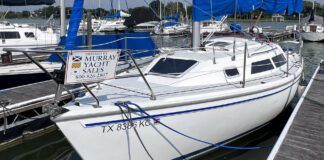
- Privacy Policy
- Do Not Sell My Personal Information
- Online Account Activation
- Privacy Manager

Home » Blog » Gear » Watermakers: a guide to marine desalinators and making water on a boat
Watermakers: a guide to marine desalinators and making water on a boat
By Author Fiona McGlynn
Posted on Last updated: March 23, 2022
There’s something magical about a watermaker—at least that’s how I felt after we installed one on our boat. That may sound overblown, but think about it: watermakers transform salt water into fresh water, providing a near-endless supply of potable water for drinking, bathing, and cleaning! THAT my friends is an amazing piece of technology!
(If you don’t share my enthusiasm, try going without a shower for a few days and you’ll begin to see my point).
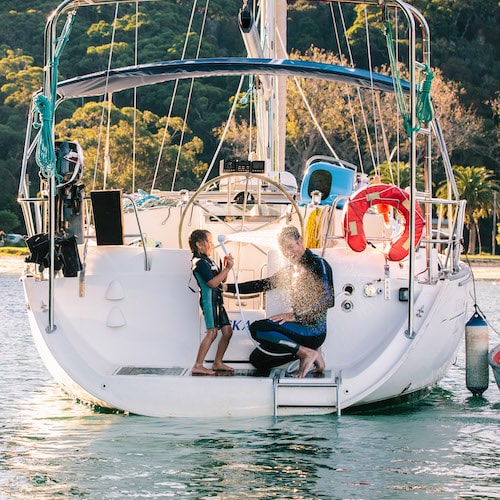
Having experienced living on a boat and cruising, both with and without a marine desalinator, I can attest that it’s a game-changing piece of gear. However, you definitely don’t need one to go cruising. There are plenty of low-tech ways to collect and make water on a boat.
Marine desalinators do offer some major benefits: there’s more water for showers, it’s easier to travel farther afield, you can spend more time in a remote location. However, these benefits have to be weighed against the drawbacks: namely a hefty price tag and ongoing maintenance.
Deciding whether a watermaker is right for you will come down to the type of cruising you’re doing, how much water you need, and your budget. Read on to learn about the pros and cons, costs, and key features of marine watermakers.
How does a watermaker work?
A watermaker on a yacht converts seawater into fresh water through a process known as reverse osmosis (RO). A high-pressure pump pushes seawater through a semi-permeable membrane that filters out salt, organics, and bacteria. The fresh water is pumped into your water tanks while the remaining brine bi-product is discharged over the side of the boat, back into the ocean.
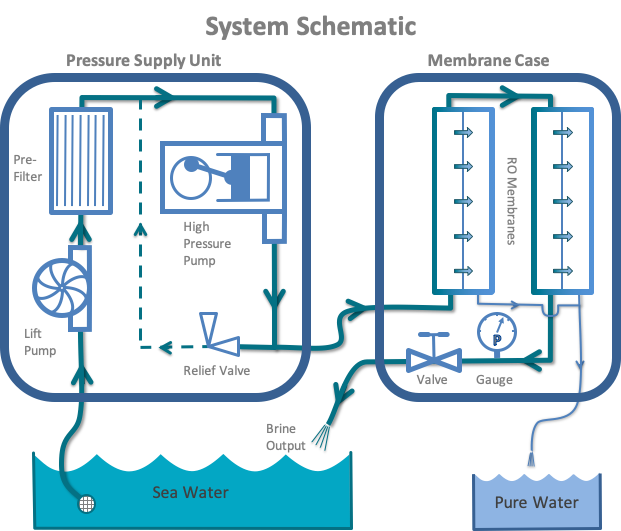
Marine watermakers: the benefits and drawbacks
Less water rationing.
When we started our 13,000 mile trip across the Pacific, we didn’t have a watermaker. We were on a tight budget and decided to prioritize other pieces of equipment like a life raft and wind vane.
As a result, we became experts in conserving water on a boat . We would carefully ration out water for washing dishes, taking showers, and even brushing our teeth!
After getting a watermaker we became far less meiserly because we knew we could always make more water if we needed to. It was a relief to not be constantly thinking about how much water we were using over the course of a day.
That being said, we couldn’t relax completely. We had to keep our tanks topped up, so as not to run the pump dry. We also always carried potable water in reserve, in case our watermaker broke in the middle of a long passage.
More luxuries
Can’t live without a proper shower? A boat water maker can make water-intensive luxuries like freshwater deck washdown, freshwater flushing heads, laundry, daily showers, and even baths, a possibility.
As great as this sounds in theory, we were surprised to find that we didn’t indulge in more showers after we got the watermaker.
We continued to use a hand pump pesticide sprayer to shower on deck despite having a watermaker and shower below. While some of this came down to habit, we also disliked running our engine (and consuming diesel) just to run the watermaker.
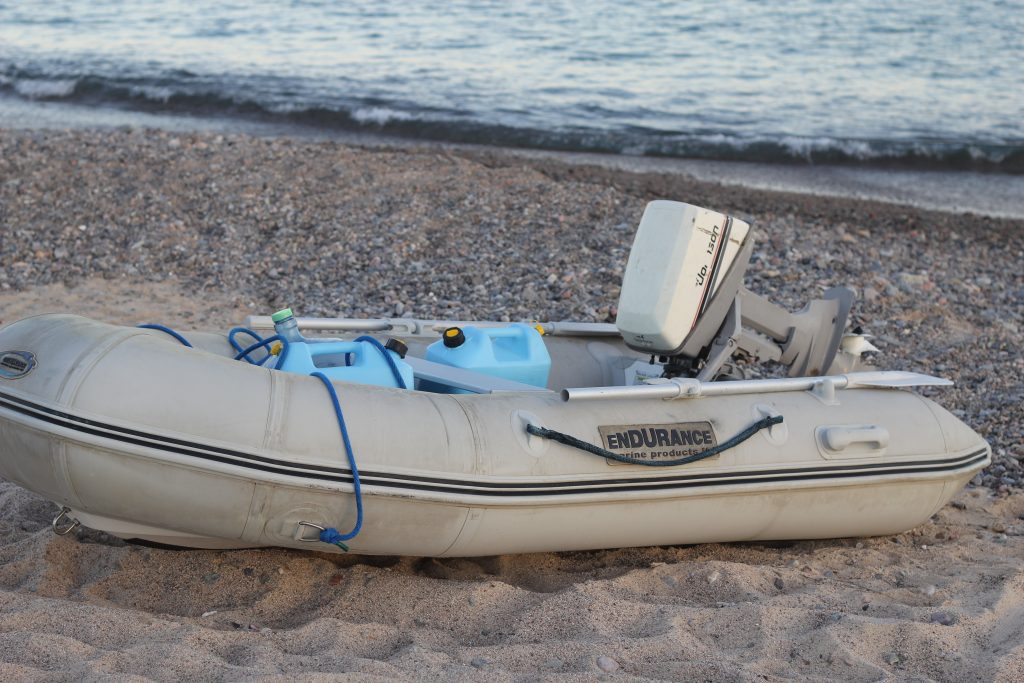
No hauling water
For us, this was by far the greatest benefit of having a watermaker!
While cruising in the US and Canada, we could refill our water tanks at a dock or marina. This was a minor hassle because it involved pulling up the anchor and docking the boat.
In Mexico, it was more challenging to get water. We would fill 5-gallon jugs at the local water purification plant in town and wheel them back to our boat on a collapsible dolly.
It often took a couple of trips with the dolly and dinghy to fill our water tanks. Oh, and we broke our dolly, twice!
We realized that if we wanted to spend more time exploring, and less time hauling water, we would have to invest in a watermaker. When we reached La Paz, Mexico we bought a refurbished watermaker, and we were so glad we did!
Our sailboat water maker gave us the gift of time, especially in places like Mexico and the South Pacific, where there were limited opportunities to fill water tanks up at the docks. It also saved us paying docking and water fees.
We estimate that our boat water maker saved us anywhere from four to six hours every week, time that we could spend exploring the wonderful places we were visiting.
A clean, safe water source
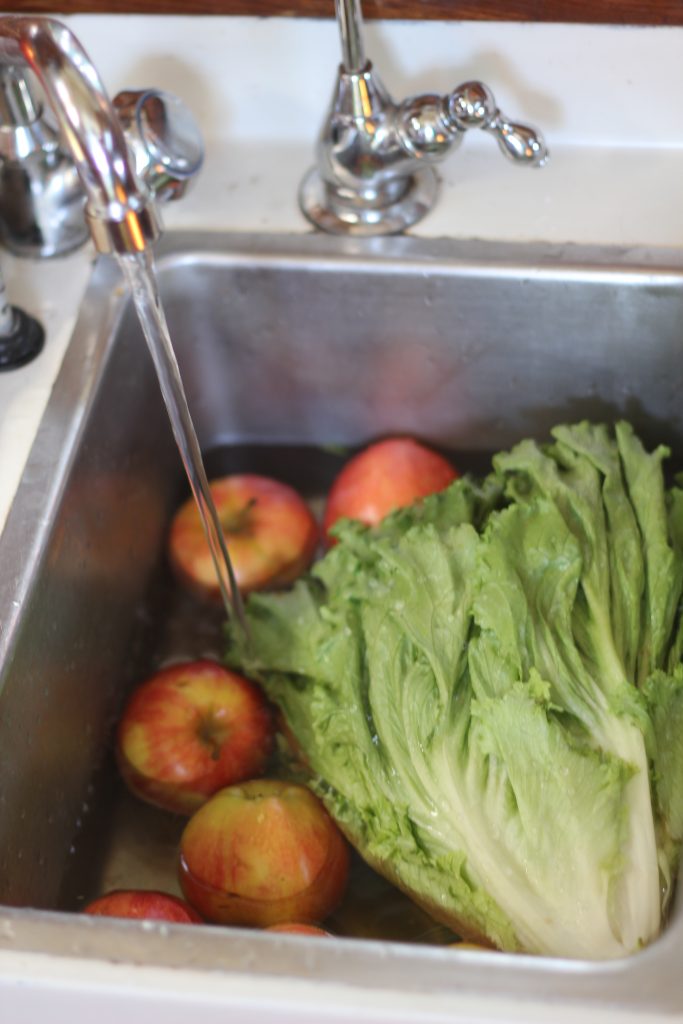
In places where the drinking water may be suspect, a boat water maker can be a reliable source of safe drinking water (assuming it’s in good working condition!).
More time in remote locations
A watermaker is a great tool if you’re drawn to remote locations where you might be the only boat in the anchorage.
It wasn’t until we reached Los Frailes, a secluded village on the Baja, that we really began to think about buying a watermaker.
There we were in an idyllic anchorage, surrounded by spectacular hiking and fishing. There was only one problem—every two days we had to walk 10 miles into town with our water jugs and hope that some kind samaritan would give us a lift back to our boat.
Before having a watermaker, we’d often leave a place we loved just because we needed to fill up our tanks. With a watermaker, we were more self-sufficient and could stay an extra few days, or as long as we wanted!
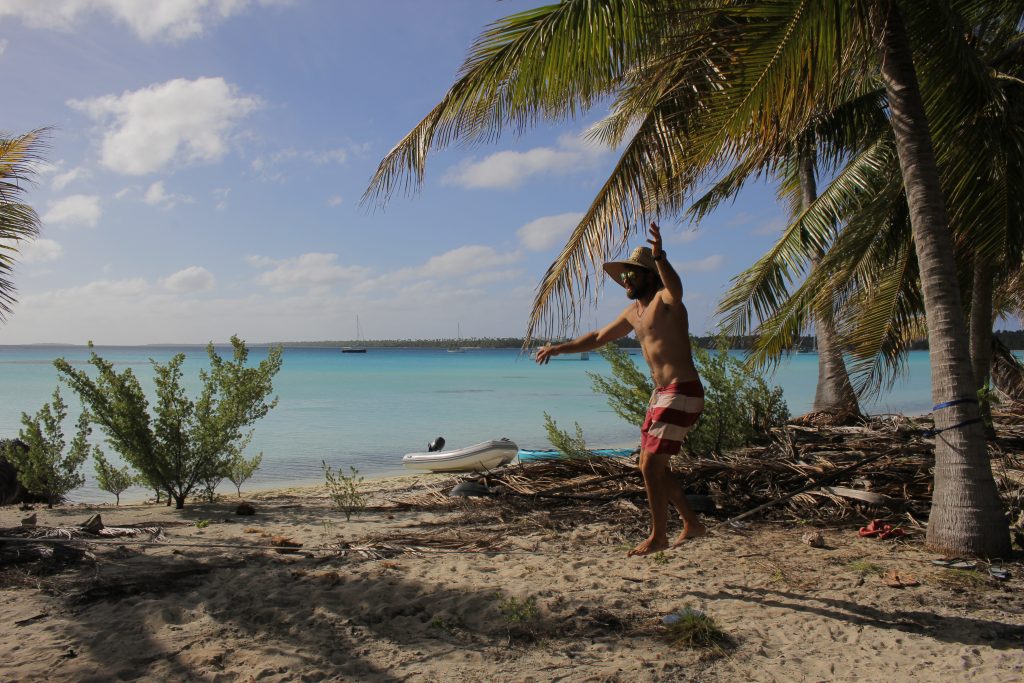
The number one drawback is the cost. We were able to find a refurbished water desalinator for $3,000, which was a great deal but also a considerable slice out of our cruising kitty.
How much does a watermaker cost?
Powered desalination systems for your average recreational cruising boat range from around 3,500 USD to 11,000 USD, with the more expensive options offering higher production (gallons of fresh water per hour).
Ongoing maintenance
Watermakers are yet another piece of boat equipment that needs to be maintained.
The majority of watermaker problems are caused by not using it enough or not using it properly.
If a watermaker is not used for a few weeks, the planktonic organisms in the seawater will die, rot, and clog the membrane and filters. This can eventually damage the reverse osmosis membrane in the watermaker.
For this reason, boat water makers should be used frequently and regularly flushed with fresh water.
Watermaker flushing
Check your manufacturer’s instructions on how to flush.
Rainman recommends flushing the seawater out of the system with fresh water if you are not using the system for more than a day or two. After another week, you need to freshwater flush the system again or pickle it for long-term storage.
Of course, it’s easy to forget, so we made it a rule to freshwater flush our watermaker after every use.
This is one good reason to choose a watermaker with an output that will meet your water consumption needs but not exceed them. If you’re using it every second day, you won’t have to try and remember whether you’ve flushed it or not.
Flushing a watermaker is relatively simple but it does involve a bit of work. We used a system with buckets of fresh water to flush our system and it generally took about 5 minutes.
You can also buy systems that automatically flush your watermaker at pre-determined times—even when you’re away from the boat (more on autoflush systems below).
Whatever you do, don’t use chlorinated water to flush as it will destroy reverse osmosis membranes. It’s possible to buy a carbon filter to remove chlorine from water sources at the dock.
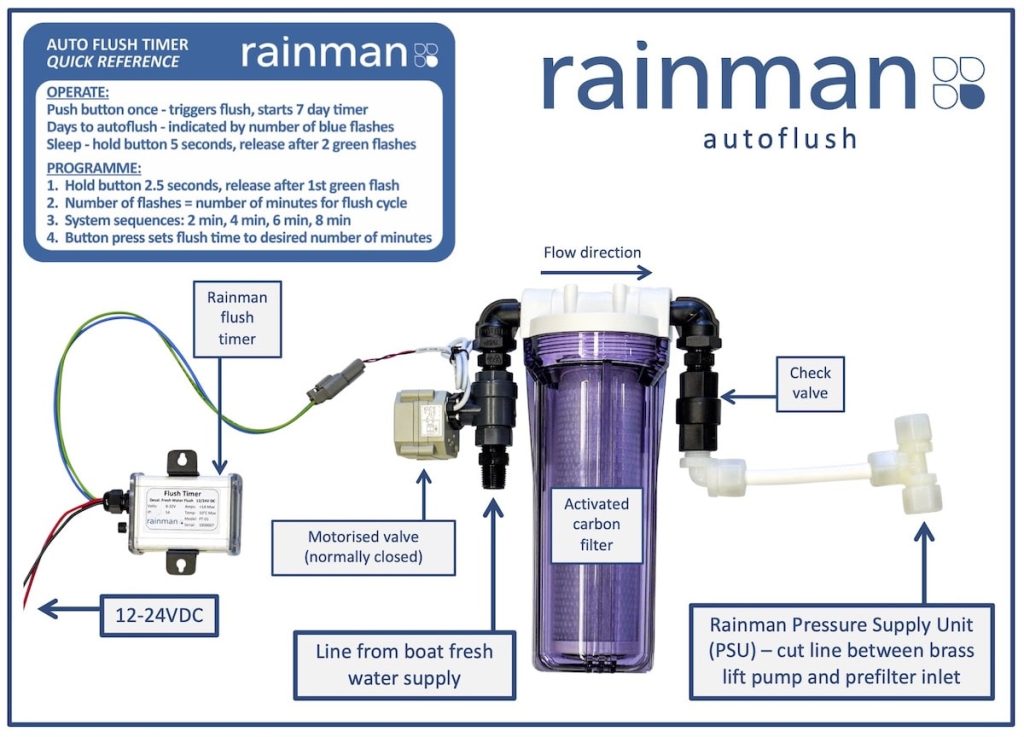
Pickling a watermaker
If you don’t plan on using your watermaker for a while it needs to be “pickled” with a special biocide to prevent growth and buildup which could render your reverse osmosis membrane totally useless.
A watermaker should also be pickled every so often to chemically cleanse the membrane.
In addition to flushing and pickling, you will also need to clean out and replace the raw water pre-filters.
Operating costs
When properly cared for, a membrane should last five to ten years. If you don’t properly flush or pickle your watermaker, it can be a lot sooner and membranes aren’t cheap, generally costing in the range of 200-700 USD.
You’ll also need to purchase pre-filters and pickling solution, which are generally quite affordable. It’s also a good idea to carry spare parts
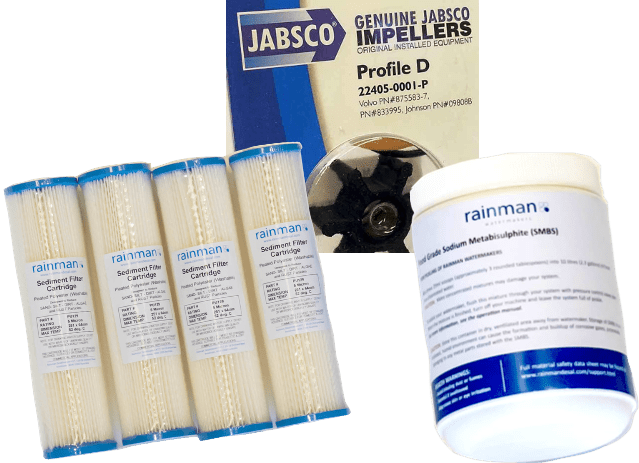
Power consumption
Watermakers can be real power hogs. When Practical Sailor tested a dozen DC watermakers they found they could draw anywhere from 12 to 48 watts per gallon, a huge range in efficiency!
According to Practical Sailor, “for maximum efficiency none of the systems drawing 15 amps or more should be operated without running the engine at the same time.”
We had to run our engine for hours to fill our tanks, which was annoying (and loud) when we were hanging out at anchor and also used up another finite resource—diesel fuel.
In our view, this was the single largest drawback to having a watermaker aboard.
Keep in mind that your power supply will determine what type of watermaker you buy. You may need to upgrade your electrical panels, get a generator or high-powered alternator, add solar panels, or increase battery capacity to supply the demand.
You can’t make water everywhere
While watermakers offer great flexibility and freedom, you can’t just make water in any old spot. If you make water in a polluted marina or anchorage, you’ll risk clogging up your filter. Most cruisers will head out to open water to ensure the saltwater they’re using is as clean as possible.
Key features to look for
Powered or handpump, handpump watermakers.
Handpump watermakers tend to be small and portable, the perfect thing to keep in your ditch bag in the event of an emergency. They’re less expensive than powered watermakers and produce far less water, usually around one gallon per hour.
Though I do know cruisers who have used a handpump watermaker for everyday use, they typically tend to be kept aboard for survival situations.
Powered watermakers
Powered watermakers run off your electrical supply or engine and can produce tens of gallons of water per hour. They tend to be a lot more expensive, but they’re productive enough to replenish your tanks.
Electric or engine drive
Powered watermakers can be electrically driven, by AC or DC, or run off the boat engine.
AC watermakers
AC models can produce in the range of 20-60 gph and are ideal for cruisers with an AC generator or alternator on board. They can also be used on boats with ample solar or wind sources and an inverter.
DC watermakers
DC watermaker systems typically produce in the range of 10-30 gph and are ideal for boats with solar power or 12V battery power.
Engine-driven watermakers
On an engine-driven watermaker, the high-pressure pump is belt-driven. These can produce a considerable amount of water, even on small engines. For instance, engine-driven units produce between 20-60gph, twice what a DC unit can produce.
Energy recovery watermaker
DC watermakers have become more efficient in recent years thanks to energy recovery systems (ERS). When the water leaves the watermaker it is still under pressure. ERS uses a set of valves to make use of this excess pressure to help drive the pump, which can reduce energy consumption by as much as 80 percent.
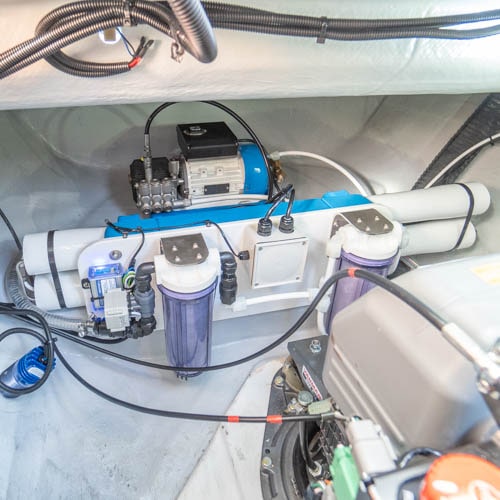
Modular, self-contained, and portable watermakers
Watermakers can be bought as modular, self-contained, and portable units. Choosing the right one may depend on your boat size and layout and whether you’re comfortable installing the watermaker yourself.
Modular units
Modular units come as several separate components that you can mount and connect yourself. This obviously offers a lot more flexibility and is particularly useful on smaller vessels where you may not have a lot of space. The downside is that these systems will take longer to install.
Self-contained units
Self-contained units arrive pre-assembled. While easier to install, they’re often bulkier and best suited to a bigger cruising sailboat with a large engine room.
Portable watermakers
Portable watermaker systems, like the Rainman watermakers, are entirely self-contained. Their compact design makes them easy to move and stow and you can completely avoid a permanent installation.
Simply put the intake and brine discharge hoses overboard, the freshwater hose in your water tank and you’ll be making water in no time.
If you race, have multiple boats, or plan on selling your boat, a portable watermaker is a great option because it can be easily moved from boat to boat.
If we were to buy another watermaker, we would probably opt for a portable one.
Automatic flushing systems
Automatic flushing systems use your boat’s freshwater supply to flush the watermaker for several minutes every few days. These systems require additional components (e.g., a timer, carbon filters, and a motorized valve) and installation but they take a lot of the maintenance out of having a watermaker onboard.
Automatic Pressure Regulation and adjustable pump speed
Your watermaker’s efficiency will be affected by the temperature and salinity of the water you’re cruising in. Cold and highly saline waters (e.g., in the high latitudes) will be more work for your watermaker, so it will take longer to purify.
Some units feature Automatic Pressure Regulation (APR) and adjustable pump speed which can help compensate for fluctuations in water temperature and salinity.
Remote control panels
Some watermakers have the option of a control panel which allows for easier access and remote control. Control panels tend to have a fairly simple interface with just a few gauges but may include a salinity sensor—so you can keep tabs on water quality—and auto-flush integration—so you can flush your watermaker with the flip of a switch.
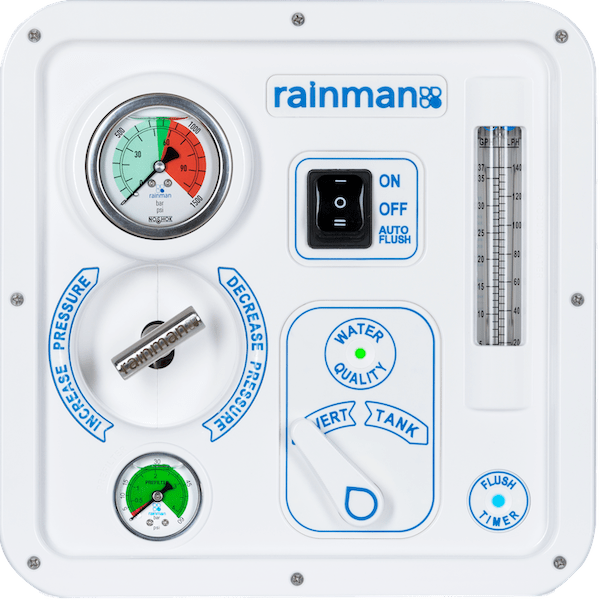
Top watermaker brands
If you’re considering buying a watermaker for a boat, here are some of the top brands to consider.
- Cruise RO Watermaker
- Echotec watermakers
- Horizon Reverse Osmosis (HRO)
- Sea Recovery watermakers
- Schenker watermakers
- Spectra watermakers
Fiona McGlynn is an award-winning boating writer who created Waterborne as a place to learn about living aboard and traveling the world by sailboat. She has written for boating magazines including BoatUS, SAIL, Cruising World, and Good Old Boat. She’s also a contributing editor at Good Old Boat and BoatUS Magazine. In 2017, Fiona and her husband completed a 3-year, 13,000-mile voyage from Vancouver to Mexico to Australia on their 35-foot sailboat.
Terms and Conditions - Privacy Policy
Visit our Popular Forums
- Monohull Sailboats
- Multihull Sailboats
- Powered Boats
- General Sailing
- Antares Yachts
- Fountaine Pajot
- Lagoon Catamarans
Cruising Business
- Boat Classifieds
- General Classifieds
- Crew Positions
- Commercial Posts
- Vendor Spotlight
Life Aboard a Boat
- Provisioning: Food & Drink
- Families, Kids, & Pets Afloat
- Recreation, Entertainment, & Fun
- Boat Ownership & Making a Living
- Liveaboard's Forum
Seamanship, Navigation & Boat Handling
- Seamanship & Boat Handling
- Training, Licensing, & Certification
- Health, Safety, & Related Gear
- Rules of the Road, Regulations, & Red Tape
Engineering & Systems
- Const. / Maint. / Refit
- Product / Service Reviews
- Electronics: Comms / AV
- Electrical: Batts / Gen / Solar
- Lithium Power Systems
- Engines & Propulsion
- Propellers & Drive Systems
- Plumbing / Fixtures
- Deck Hdw: Rigging / Sails
- Aux. Equipment & Dinghy
- Anchoring & Mooring
Photo Categories
- Member Galleries
- Life Onboard
- Sailing in the Wind
- Power Boats
- Cruising Destinations
- Maint. & Boat Building
- Marine Life
- Scuba Diving & Divers
- General Photos
Recent Photos

Listing Categories
- African Cats
- view more »
- Crew Wanted
- Crew Available
- Enhance Your Account
- Meet the Mods
- Meet the Advisors
- Signup for The Daily Cruiser Email


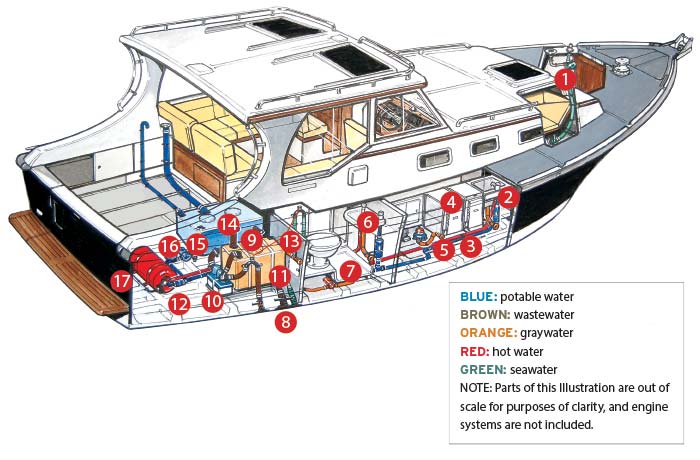
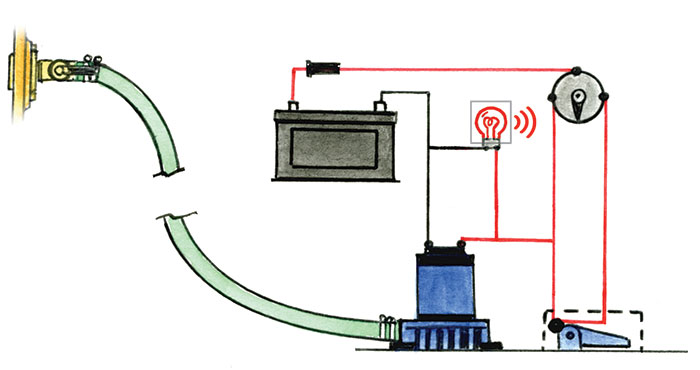
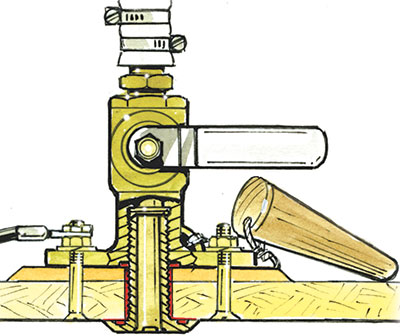
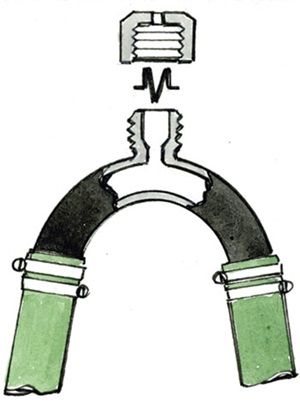







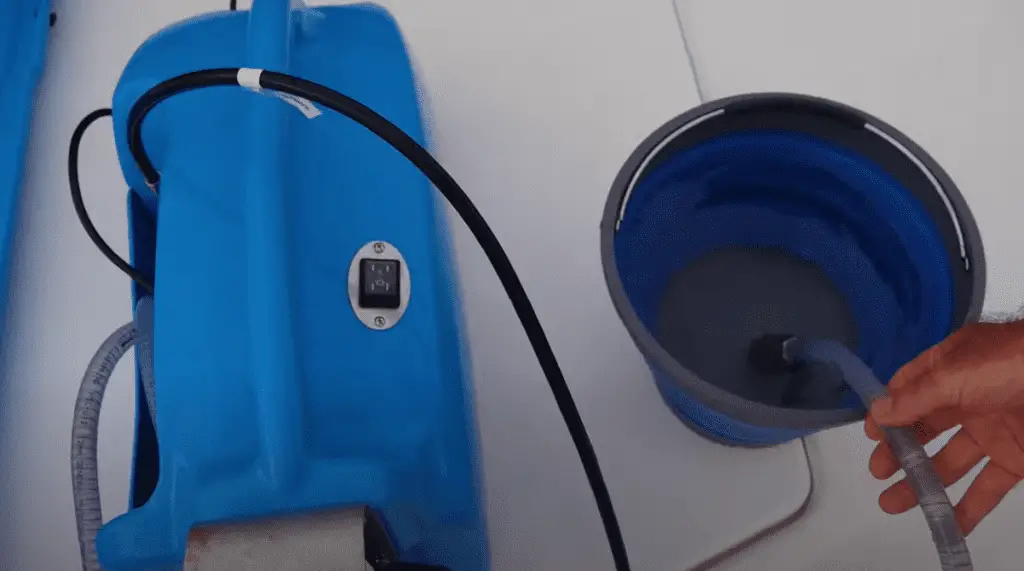



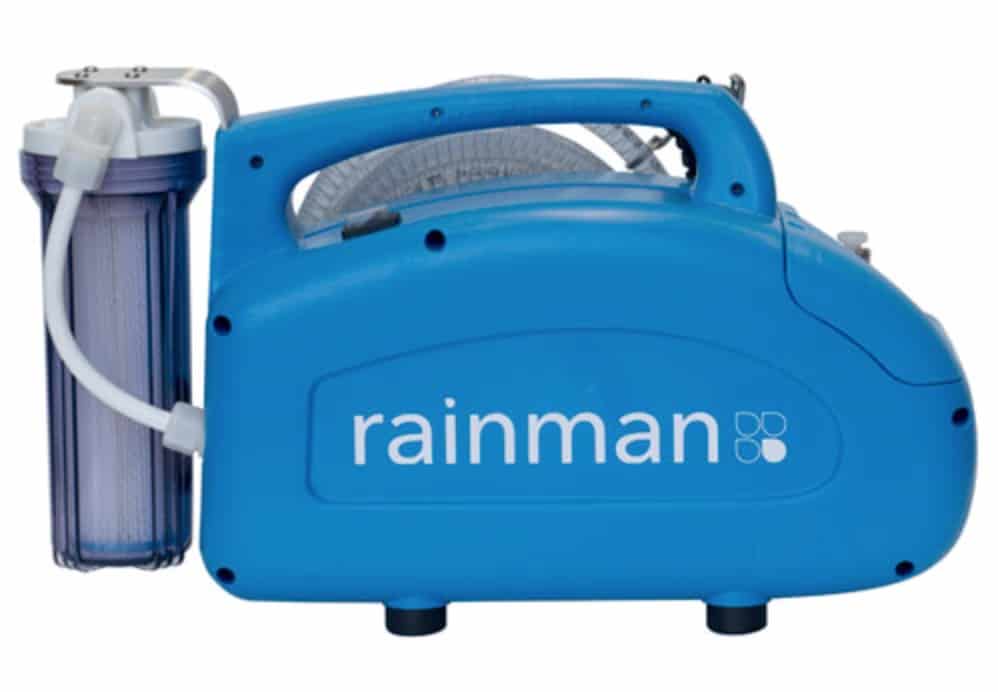
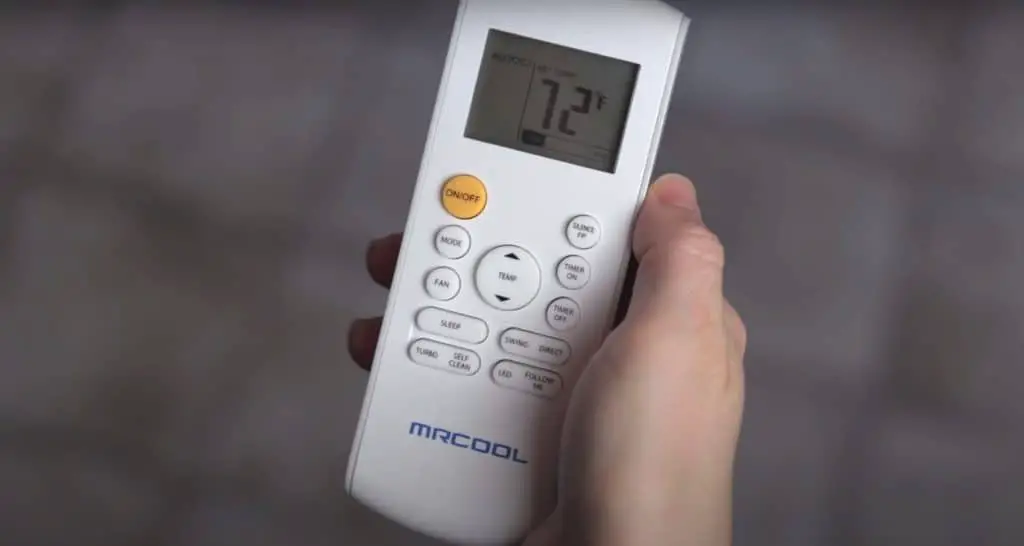
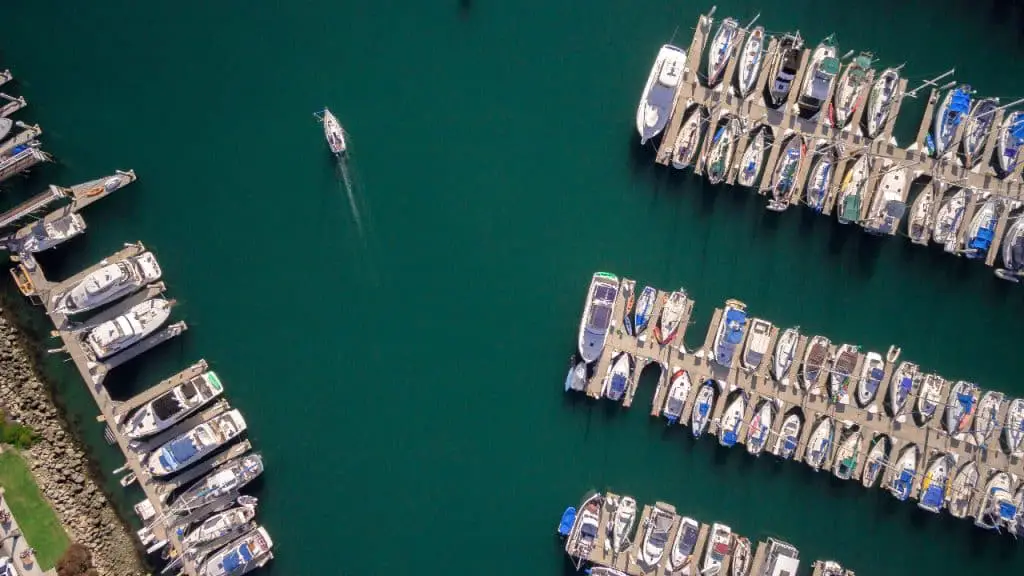
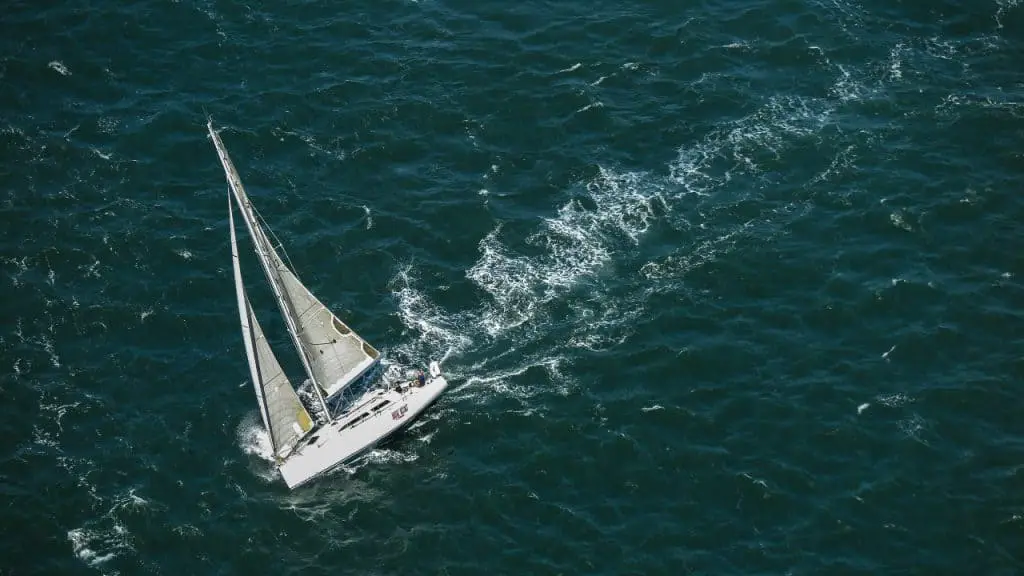
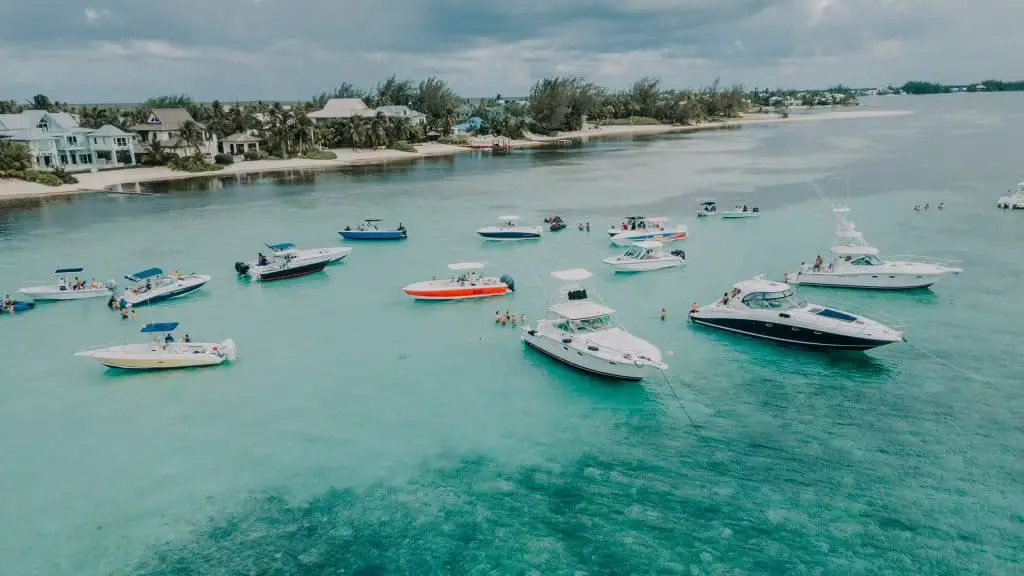
IMAGES
VIDEO
COMMENTS
Flushing the system. Commissioning your boat's freshwater system consists primarily of making sure it is purged of any antifreeze that was introduced when it was decommissioned. Start with the water tank. Open the inspection port and pump or sponge away any puddles of antifreeze that may be present below the freshwater pickup.
Pressurized water systems make life aboard more comfortable by providing water "on tap" for dishwashing, showers and other applications. The complexity of installing and maintaining one depends on the number of outlets and accessories you choose. The Whale Water System is a user-friendly system for the do-it-yourself boat owner.
Spectra Katadyn PowerSurvivor. As a compact and energy-efficient watermaker, the Spectra Katadyn PowerSurvivor is arguably the most affordable watermaker currently available on the market. We are talking about a model that only requires 4 amps to desalinate water for your sailboat.
Camco's TastePURE Spring Fresh Fresh Water System Cleaner and Deodorizer contains a food-grade surfactant and is a better cleaner than plain bleach sanitizing. As with the Star brite, we caution against adding bleach to the product as a bad reaction will occur. ... This is the most thorough boat water treatise I've seen yet. Thanks all ...
Whale photo. Remove the fresh water supply hose from the hand pump to see if water is flowing from it. If water flow is not present you can try moving the hose end to a lower point in the boat or simply try sucking on it like a straw. If there's good water flow, then your hand pump likely needs a rebuild.
Jan 18, 2016. Installation of a new freshwater system is an easy weekend's work. It was the sulfurous smell of the water issuing from Ostara 's galley faucet that finally tipped me over the edge. I could live with bottled drinking water, but when you can't even bring yourself to wash dishes with your tank water, it's time to do ...
One of the most effective solutions for sailboats to get fresh water is by collecting rainwater. Sailors can use a variety of methods to collect rainwater and store it on board. These include using a tarp to collect rainwater, using a rainwater catchment system to collect and store large amounts of water, or using a container to collect smaller ...
Since all of the watermakers that are currently available for cruising sailboats use this process for desalination, the major differences between the systems are how you power the high-pressure pump and the user interface. Powering options include 120/220-volt AC, 12- or 24-volt DC and engine/belt driven. All have their pros and cons.
Pump a 50:50 solution of water and white vinegar through the heads and leave it overnight to clean mineral deposits on the inside of the bowl, pump and valves. Follow up with a healthy shot of washing-up liquid or baby oil to lubricate the pump. Operate all seacocks to make sure they are free to turn (Photo 6).
The Ultra Whisper. The Ultra Whisper by Sea Recovery is best for small boats and sailboats, this super low power machine is specifically engineered for boaters with limited electrical options and can run on either AC or DC power, boasting a 75% reduction in power consumption over other models. It's also very quiet (hence its name)so it won ...
The best sailboat watermakers for liveaboards. The Rainman naked 12V watermaker is a great option for anyone looking for a compact, efficient way to produce fresh water. The unit is simple to set up and use, and it produces up to 30 litres of fresh water per hour for a smaller unit, or up to 140 litres per hour for a larger one.
Here are three of the highest-rated RO filter systems on the market. 1. Seawater Pro Reverse Osmosis Desalinator and Watermaker. The best modular water filtration unit available for boats is the Seawater Pro three-membrane system. This all-in-one marine water purification machine is designed for medium-sized sailboats and powerboats.
A freshwater flush kit-highly-desirable in any installation-is a $125 option. The 12-volt booster pump, drawing 1 amp, is a $120 option. An extensive cruising kit, including 12 pre-filters, rebuild parts for the high-pressure pump, cleaner, preservative, and other spares, costs $330. SKs pricing is very competitive.
A high-pressure pump pushes seawater through a semi-permeable membrane that filters out salt, organics, and bacteria. The fresh water is pumped into your water tanks while the remaining brine bi-product is discharged over the side of the boat, back into the ocean. Schematic of a Rainman watermaker system. Photo credit: Rainman.
The semi-permeable membranes found on today's watermakers are rated to work in temperatures up to 120F, which means they will do fine in your boat's engine space. The fact that they contain water and are continuously receiving a fresh supply of the stuff when in use only makes them all the more heat tolerant.
Supply piping for a boat water system must be non-toxic, non-contaminating, taste-free, and FDA approved for drinking water. If the system is pressurized or will carry hot water, the piping needs to be suitable. ... There are collateral benefits of running fresh water through the head. Shower pans too often drain into the bilge to be pumped ...
I've started noticing a small amount of water (3-4 gal) in the bilge, and I've narrowed things down to a leak in my fresh water system. I've included a drawing of my water system. My first troubleshooting step was to fill the tanks, shut all the intake manifold valves, and then shut down the water pump.Then let the boat sit for a few days. Good news there wasn't all water in the bilge, and ...
Seawater Washing (1) — Seawater systems such as anchor washdown and dishwashing with a seawater foot pump (if you're in clean water and rinse well with potable water) can conserve water. Frequently bathing in saltwater causes skin problems in many people; a freshwater rinse helps. Washdown water pump should be a short distance from the thru-hull but above the waterline.
Basic 30 (8-Gallon) Stainless Steel Water Heater, 115V/750W. Slim 20 (5.3-Gallon) Stainless Steel Water Heater, 115V/750W. 6 Gallon Front/Rear Mount Water Heater with Heat Exchanger, 120V. CONTACT WEST MARINE. Live Chat. Store Locator. Shop the best selection of Freshwater Systems from West Marine. Visit for products, prices, deals and more!
Last Updated by Daniel Wade, October 1, 2021With the right Watermaker, the ocean becomes an almost immeasurable supply of fresh and clean drinking water to keep you hydrated during your offshore sailing adventures.Many sailors do spend a lot of their time and money on various parts of the sailboat including the sails, engine, electronics, and generators especially when preparing for long ...
Unless all water is removed and replaced with antifreeze, you run the risk of a freeze destroying water lines and equipment. Winterizing your boat's freshwater system is a simple process, which can be broken down into three steps. Before You Begin. Step One: Open the Faucets. Step Two: Pour in the Antifreeze.
One of Tecnicomar's most popular systems designed for mid-range cruising yachts is the modular Oasi device, which is available in two sizes: 30 and 60. The company also makes a self-contained AC model called the Sailor Compact, available in a "slim" version for installation into extra tight spaces. tecnicomar.it.
1. Katadyn Power Survivor 40E Watermaker Desalinator. Small yet powerful, the Katadyn Power Survivor 40E is a reliable workhorse designed for boats with a small crew population of 2 to 3. This modular unit provides 1.5 gallons of water per hour, and draws only 4 amps from a 12-volt system, making it one of the most energy efficient desalinators ...